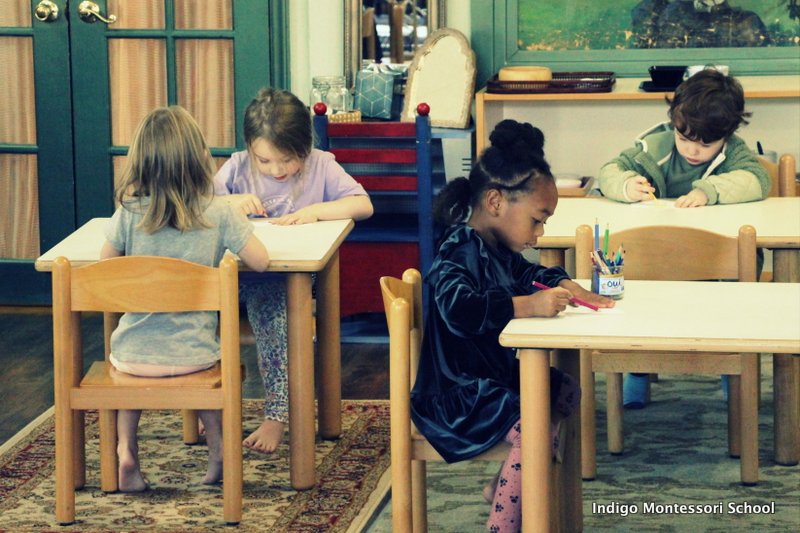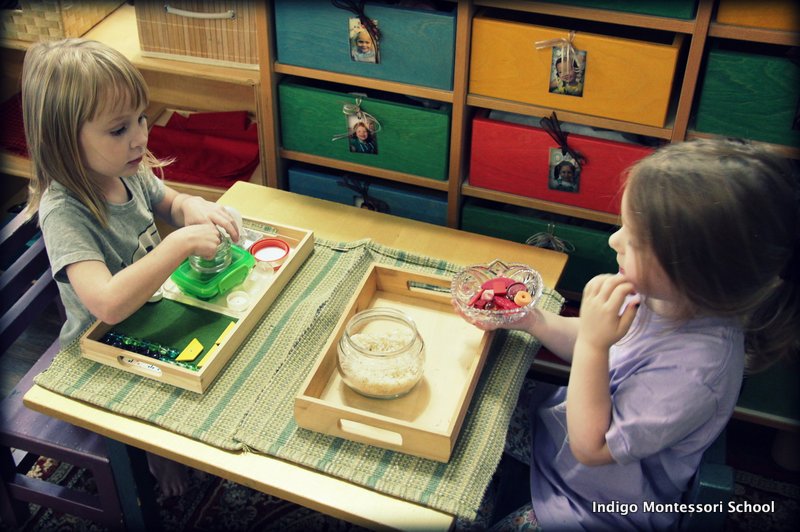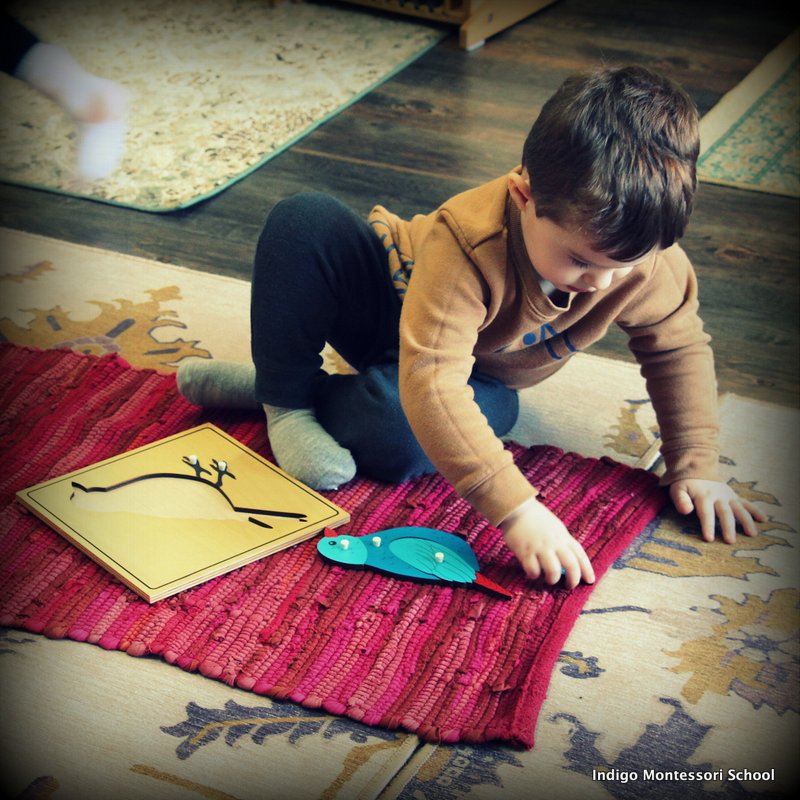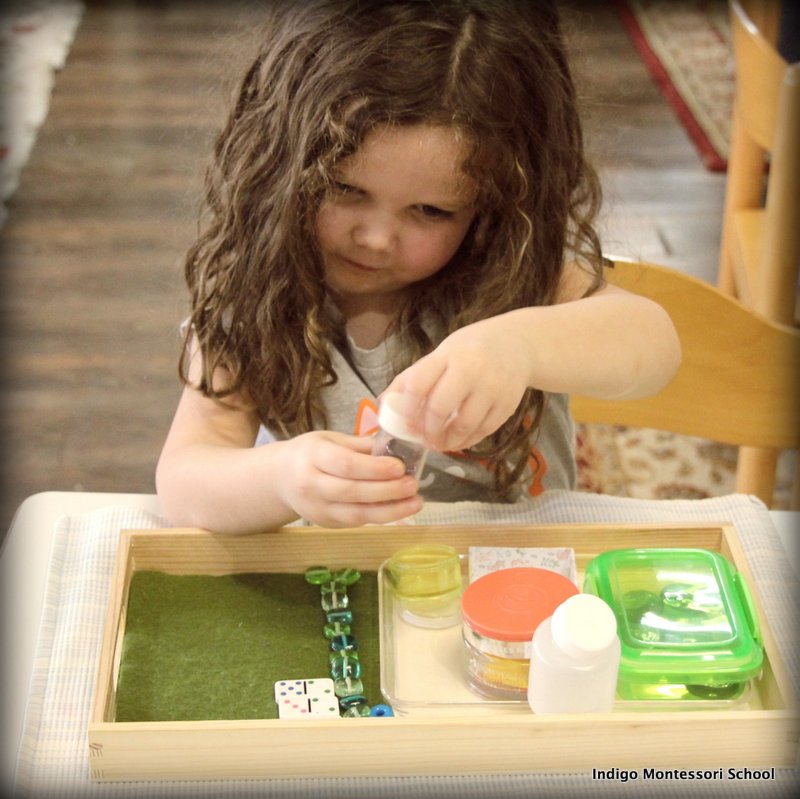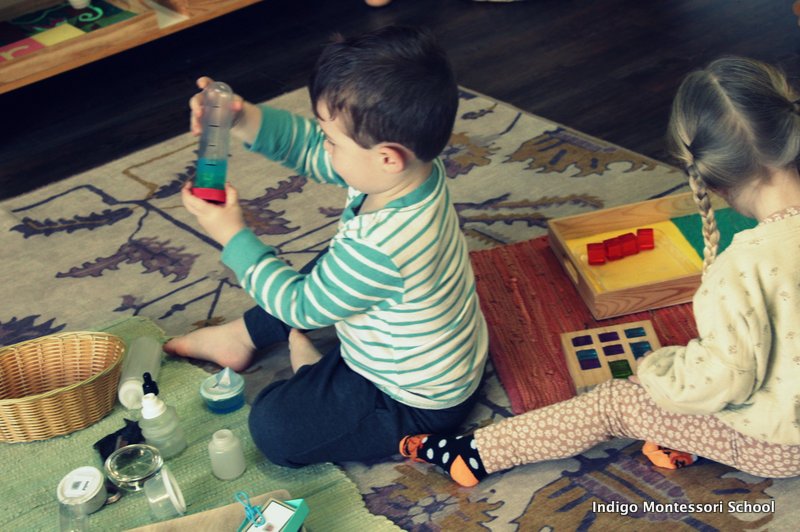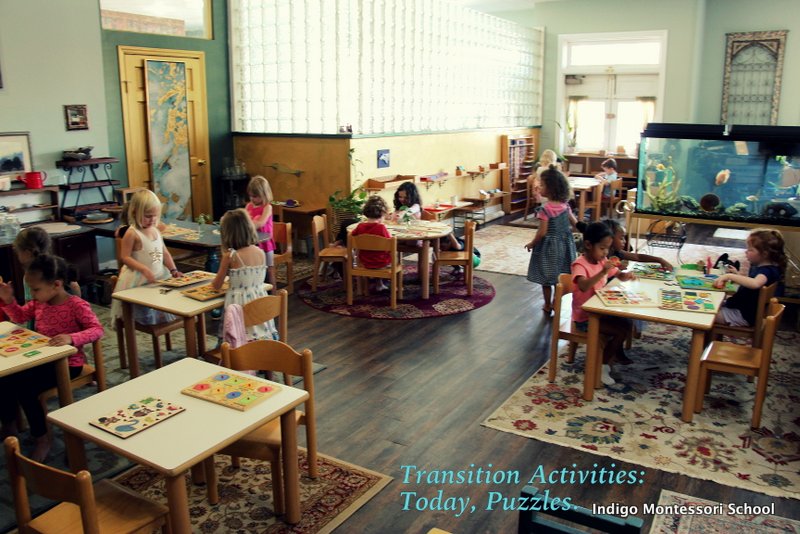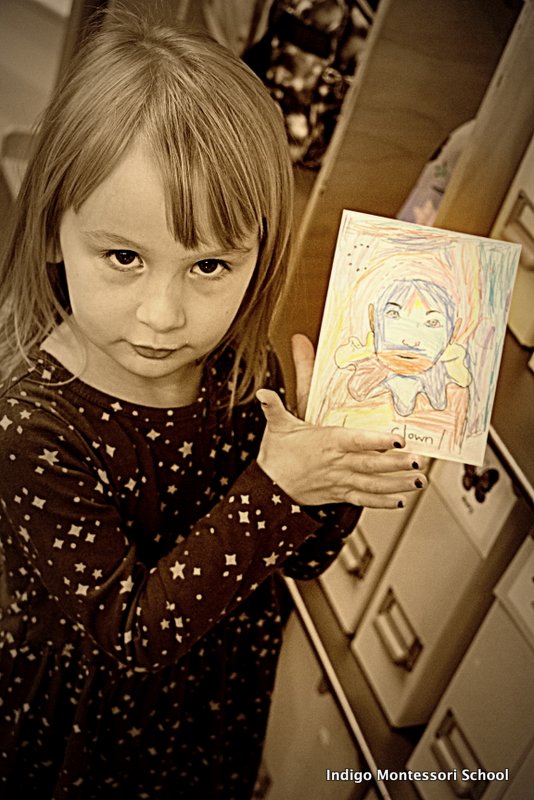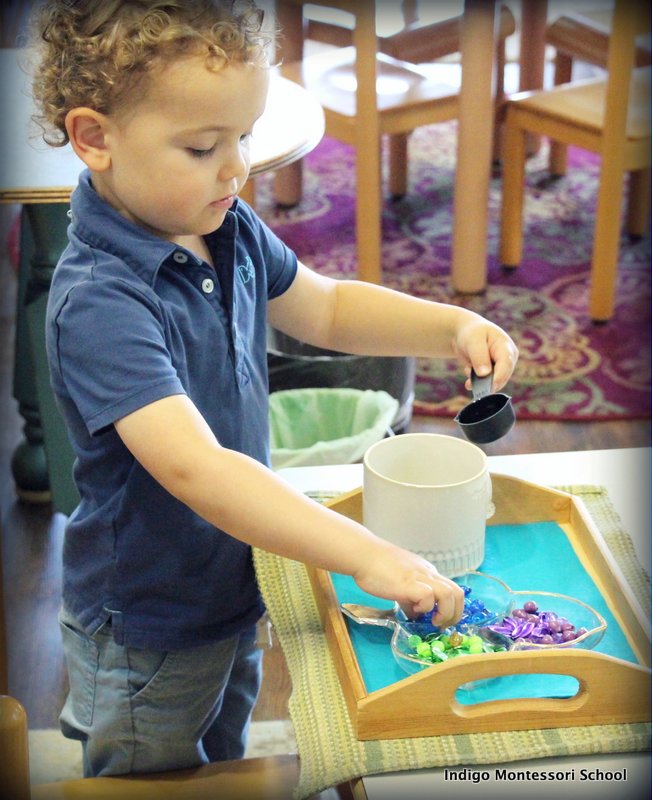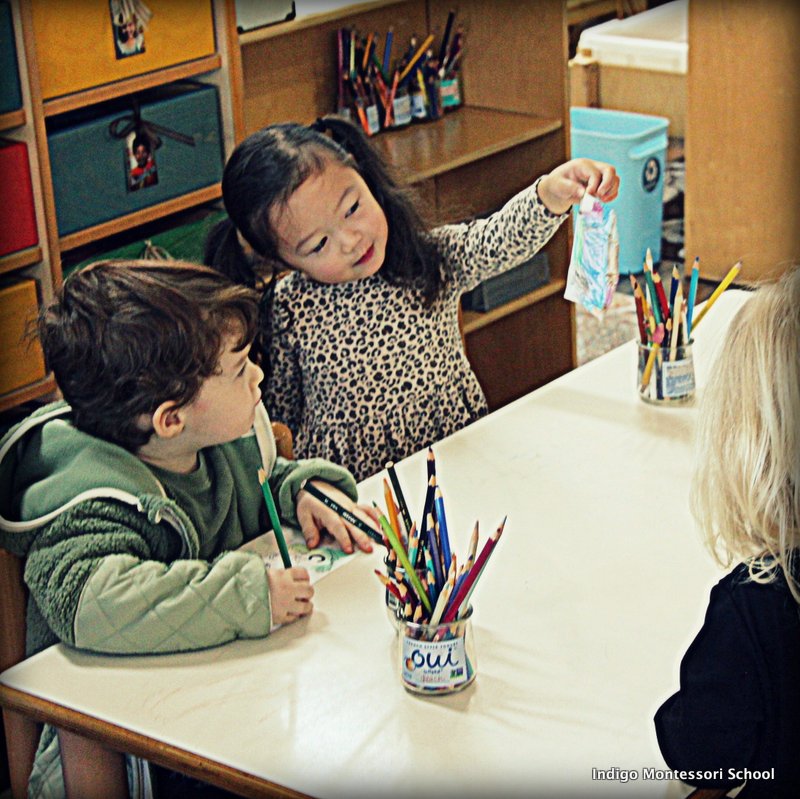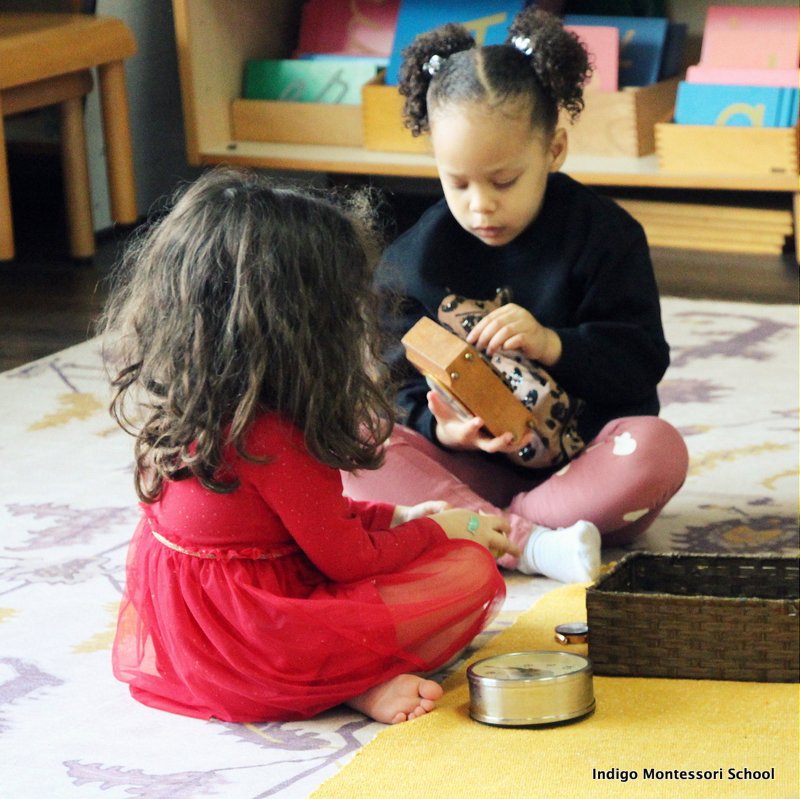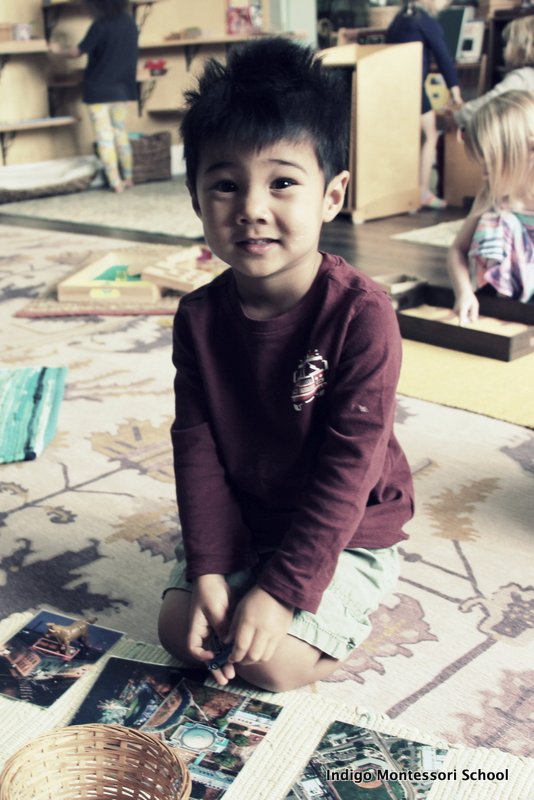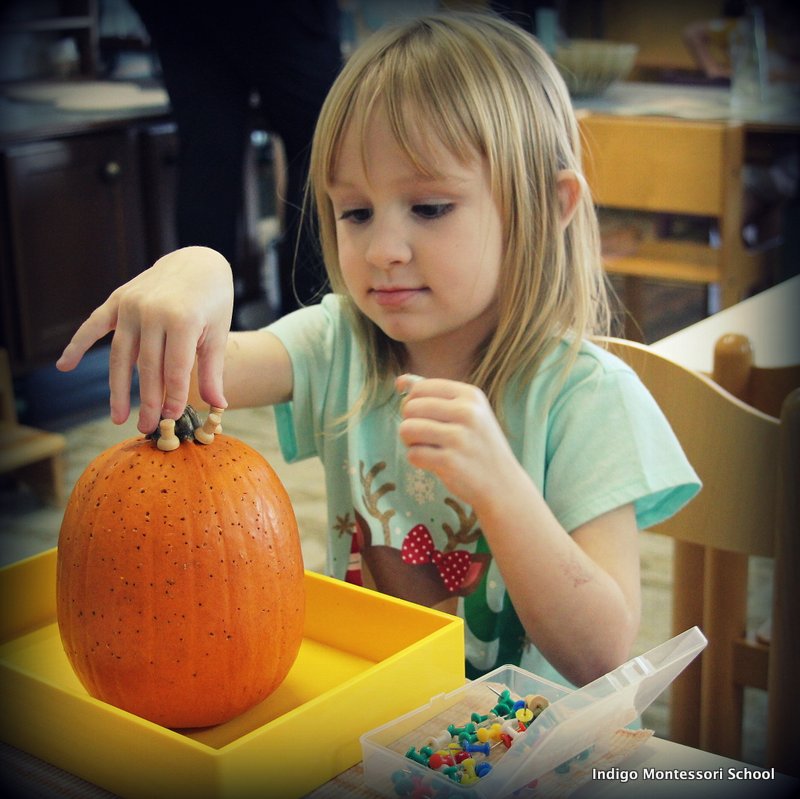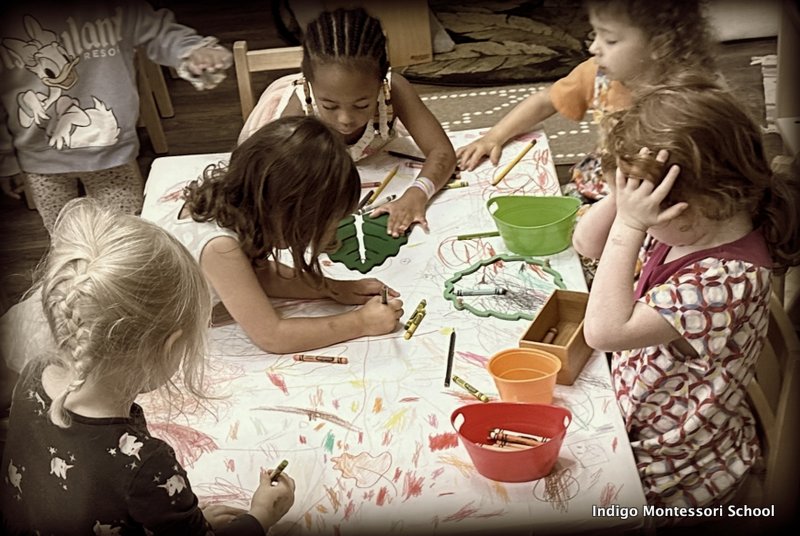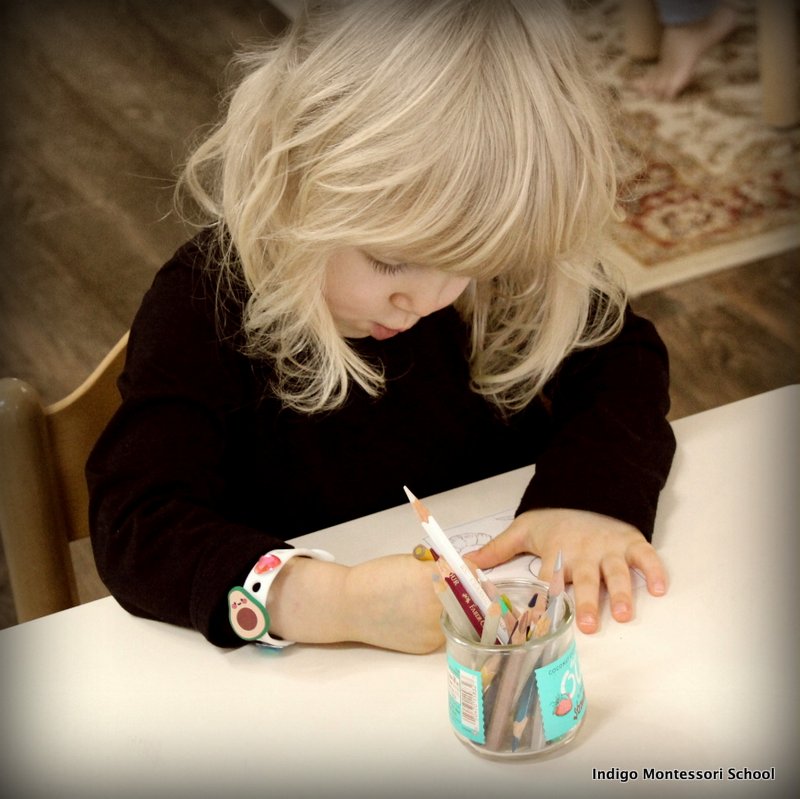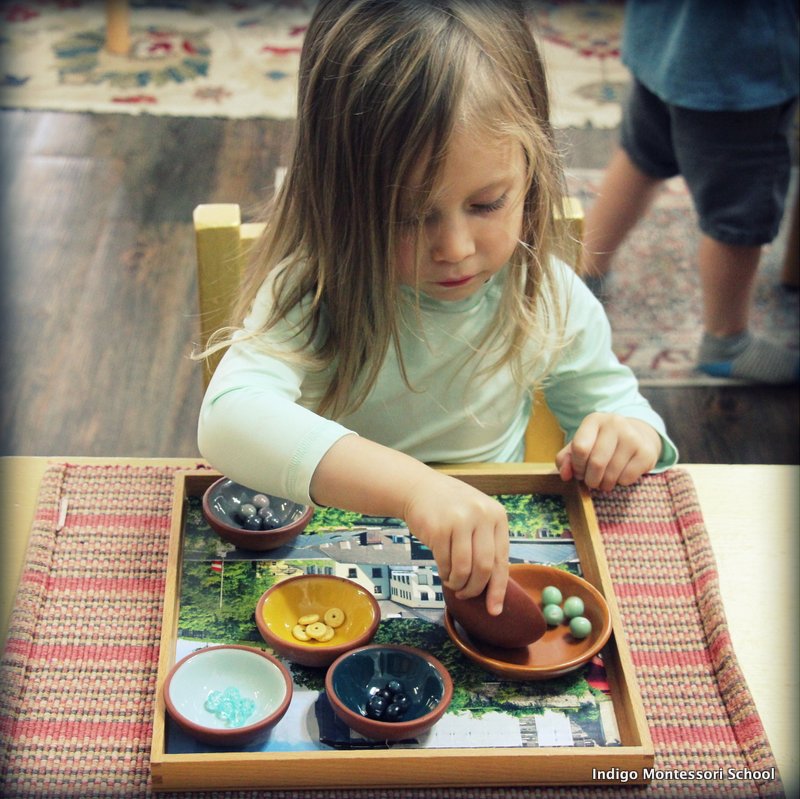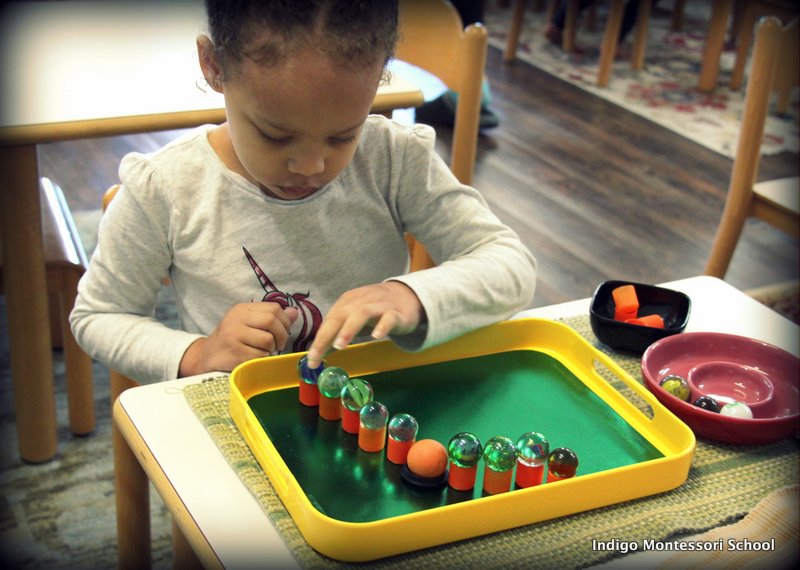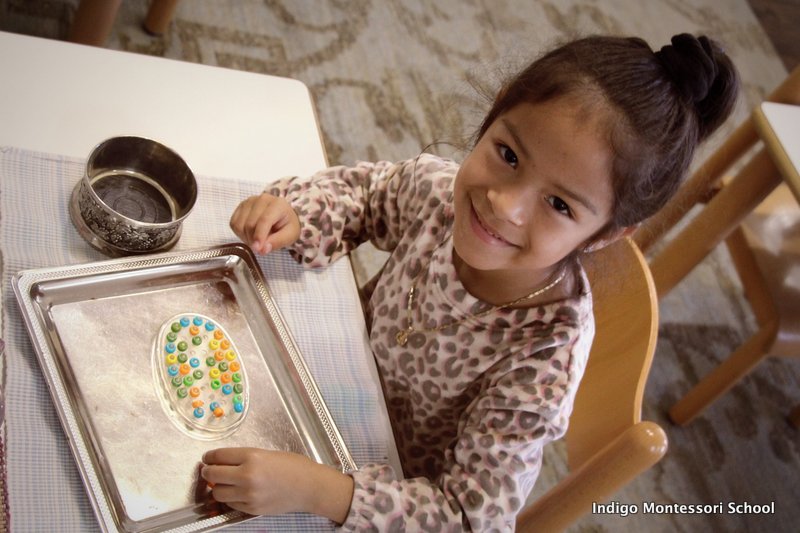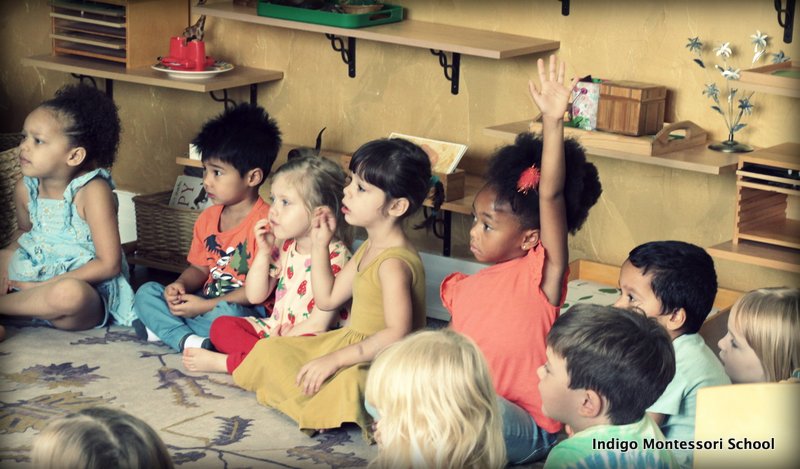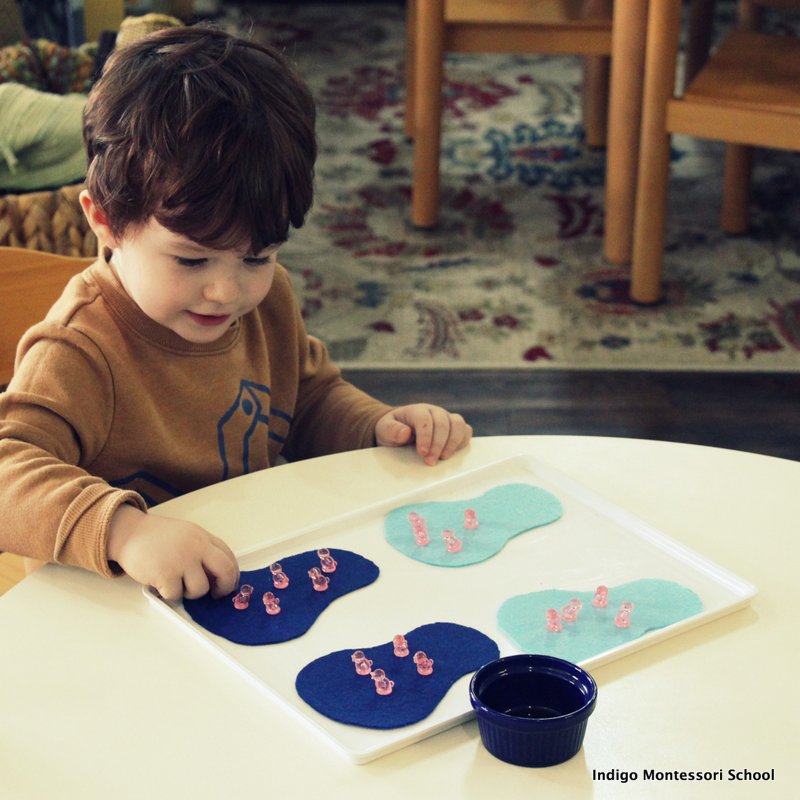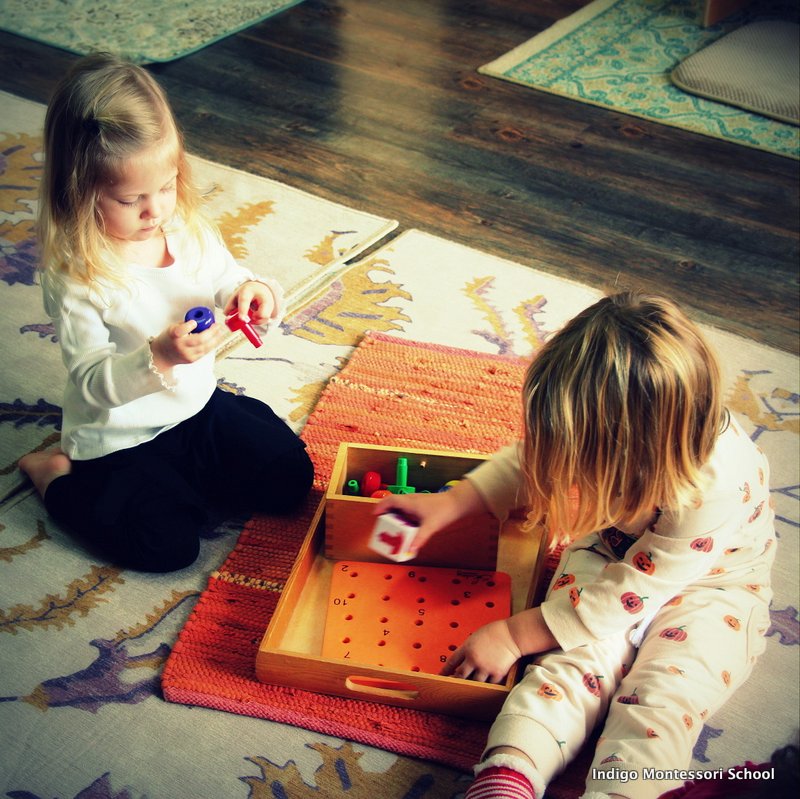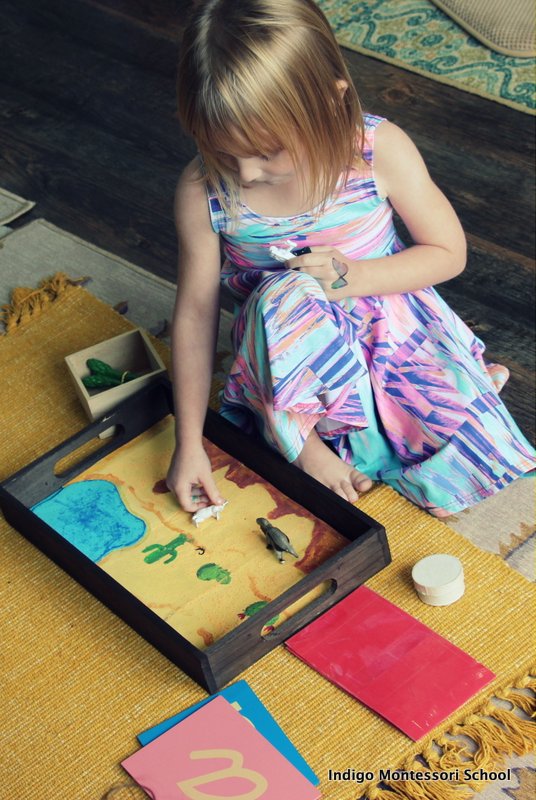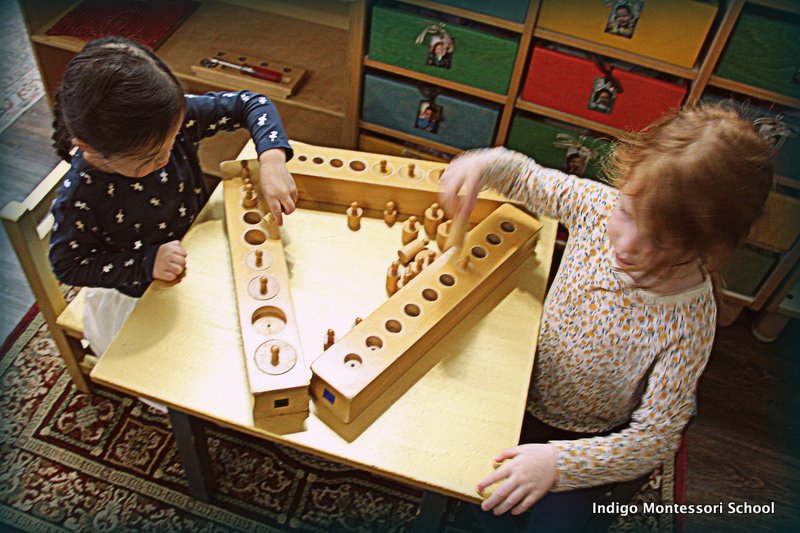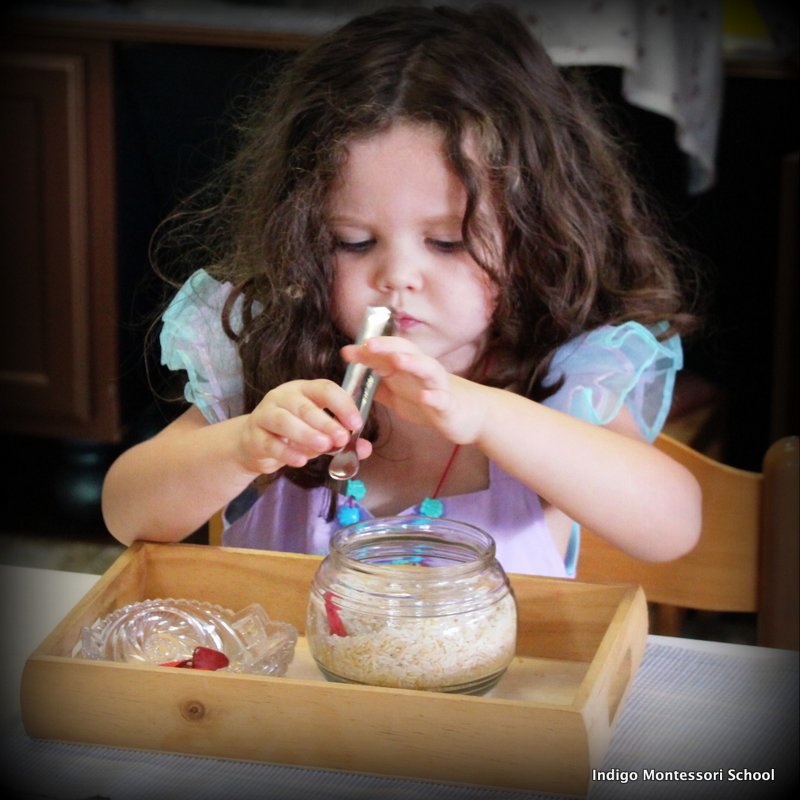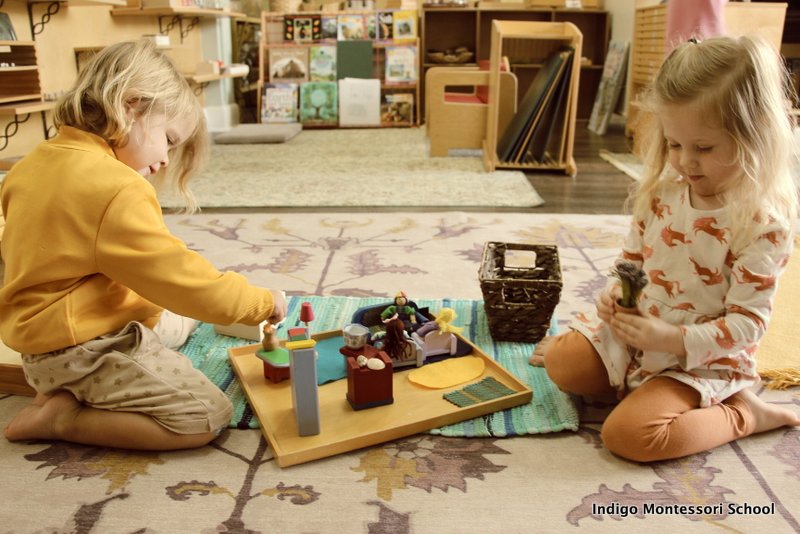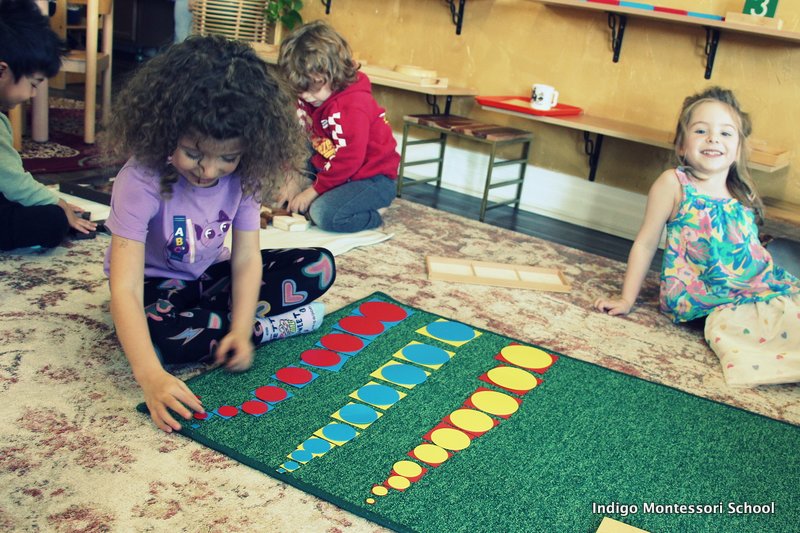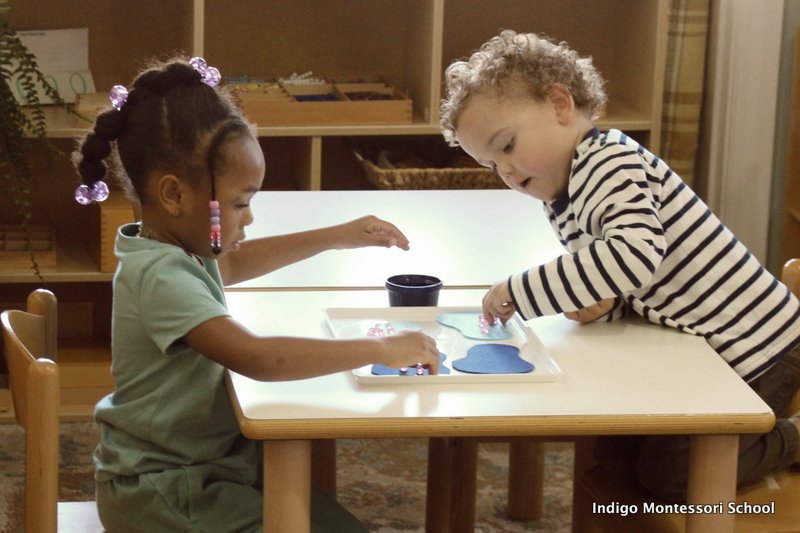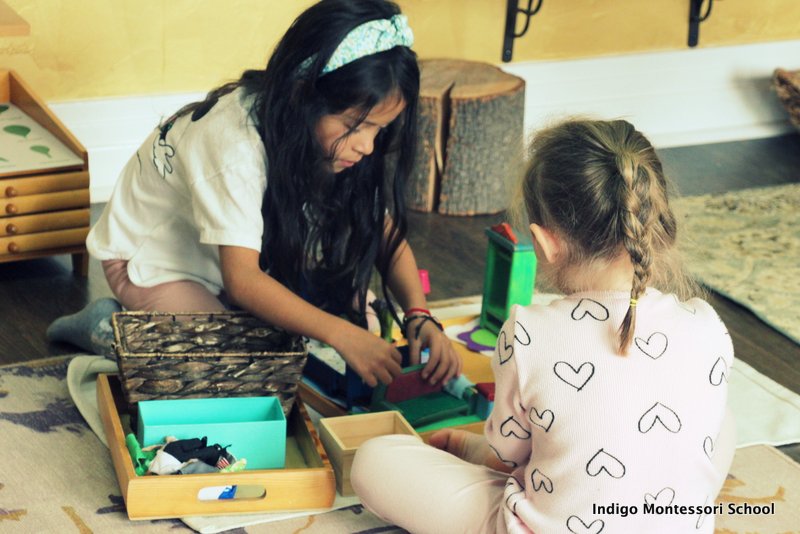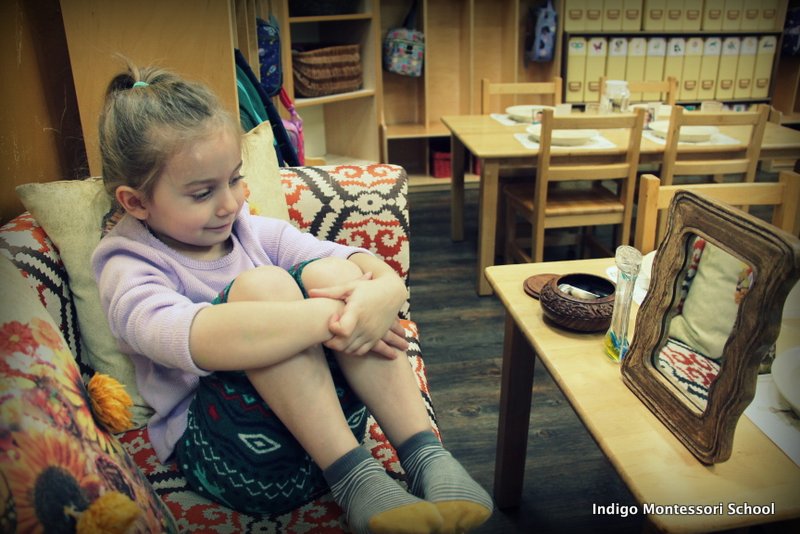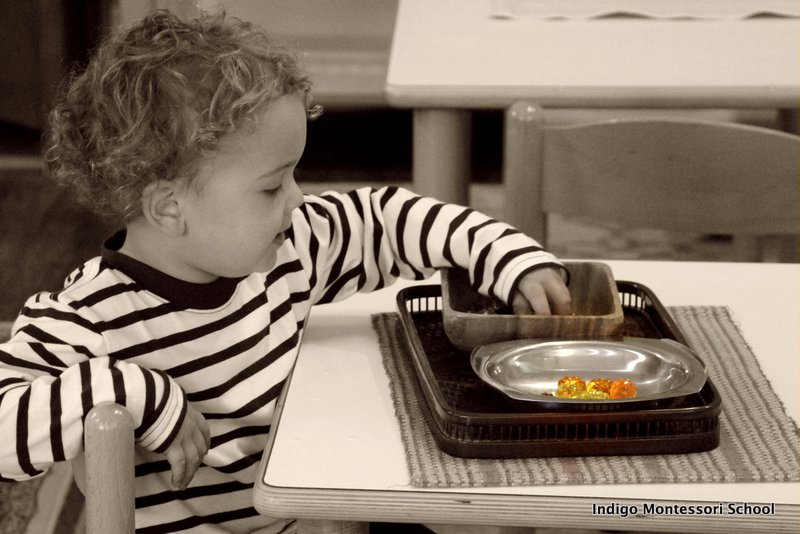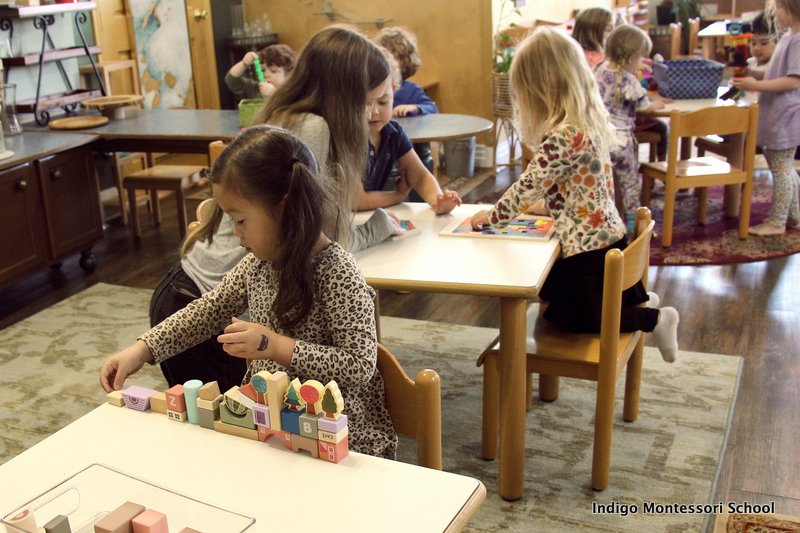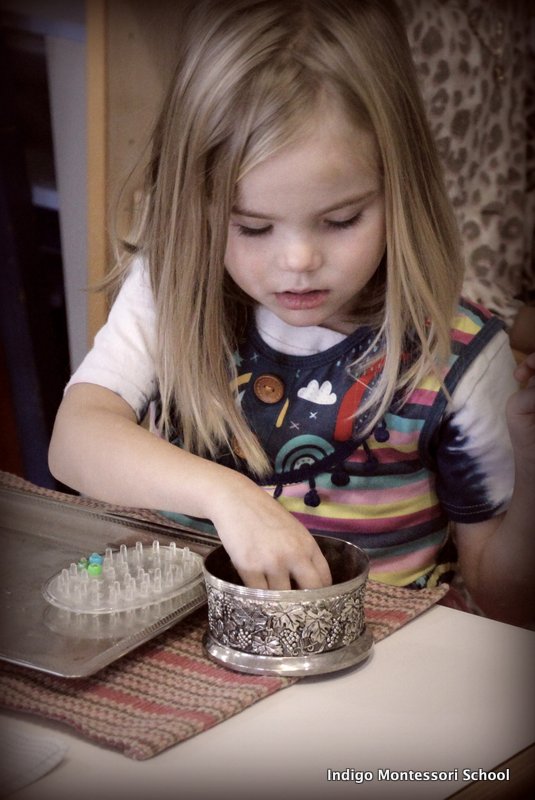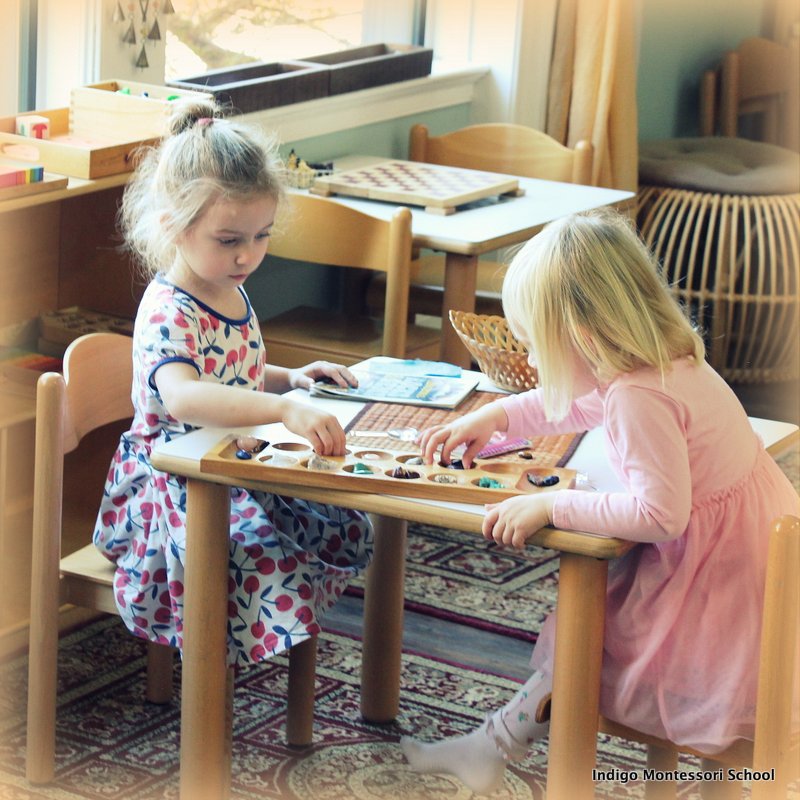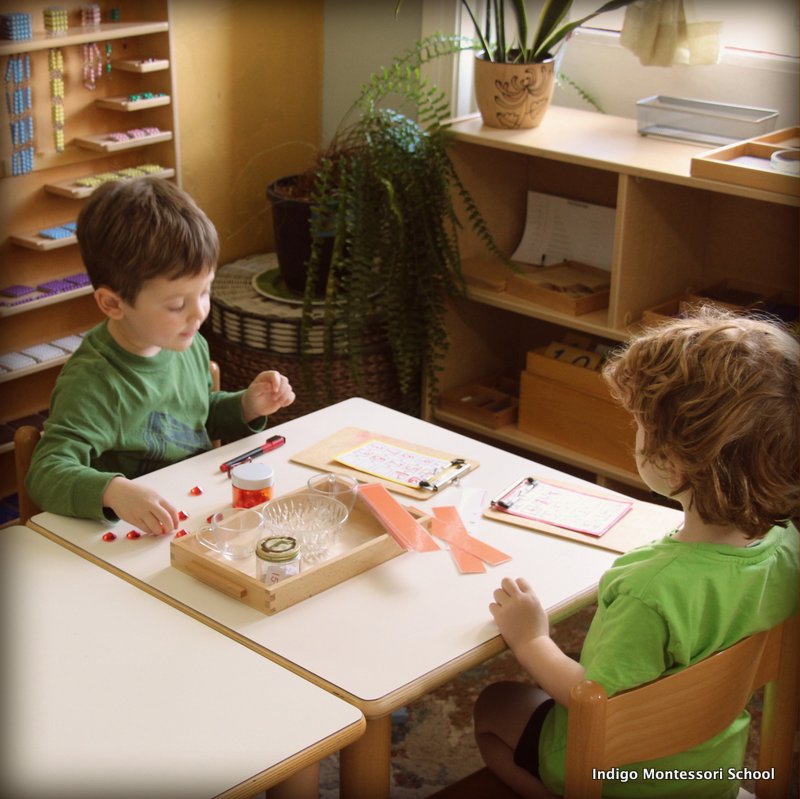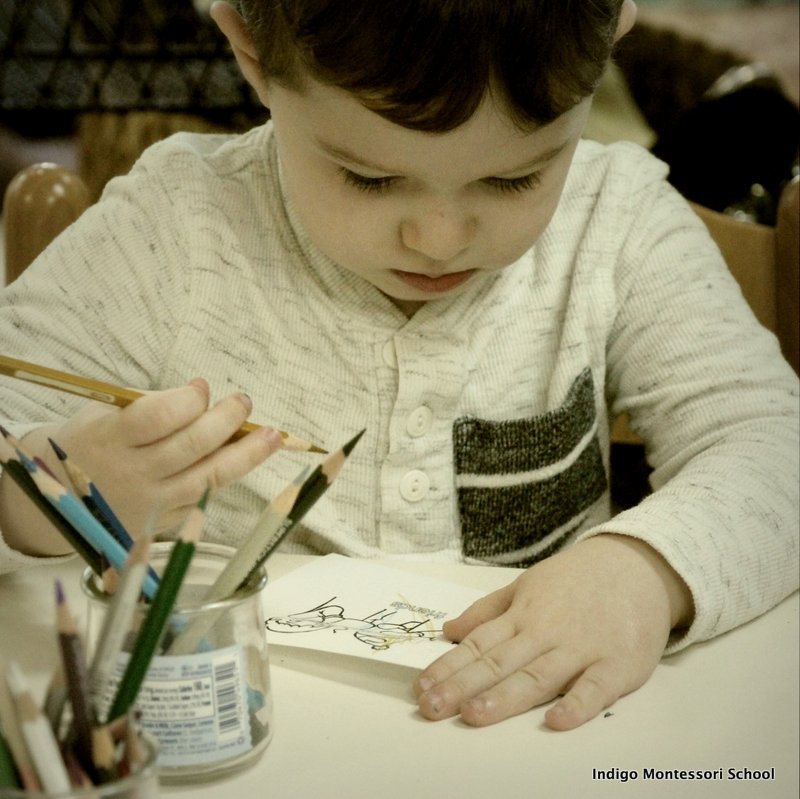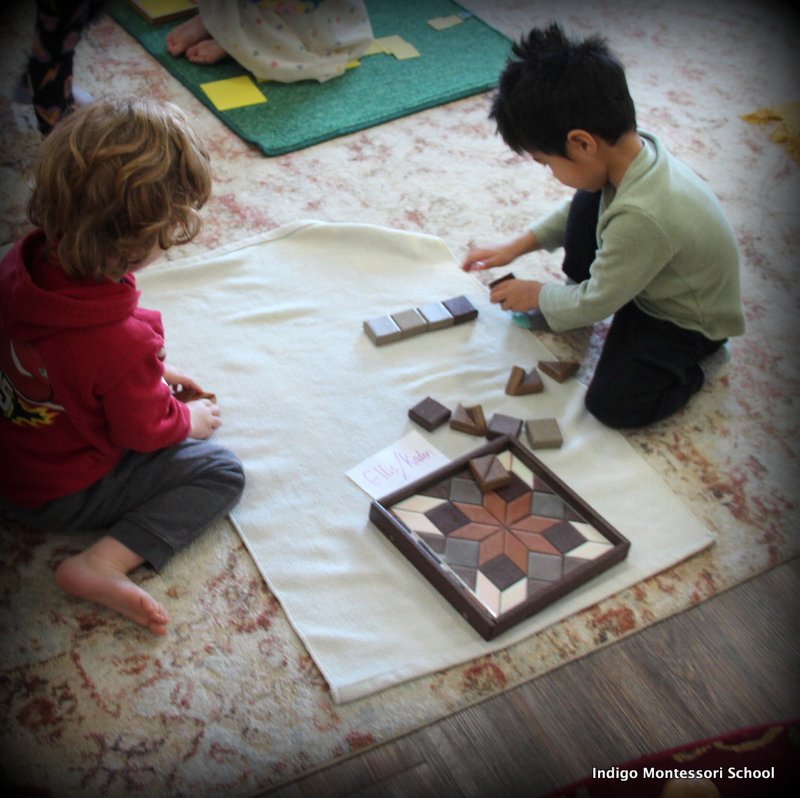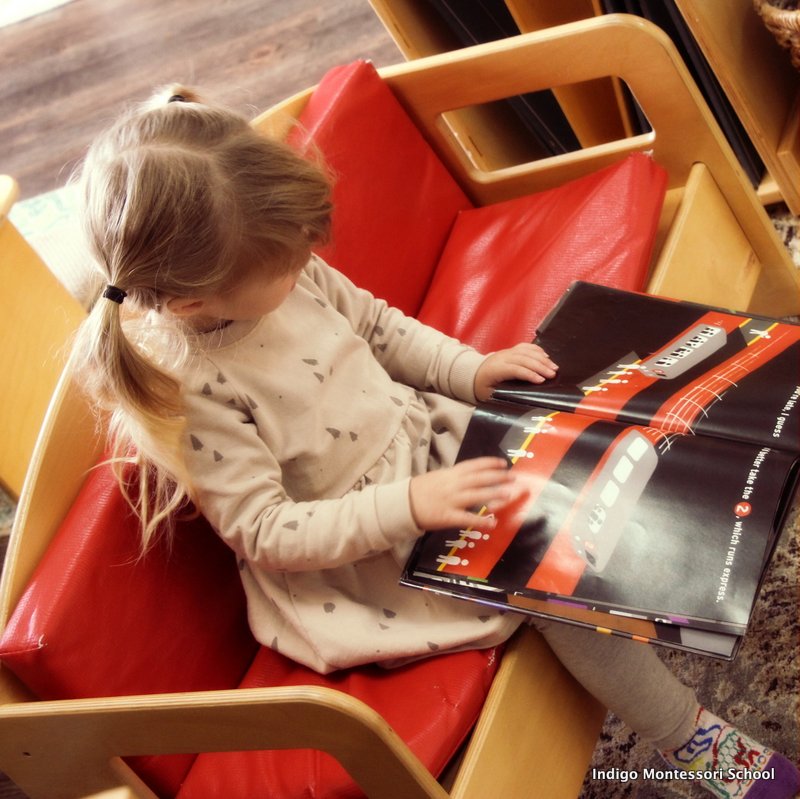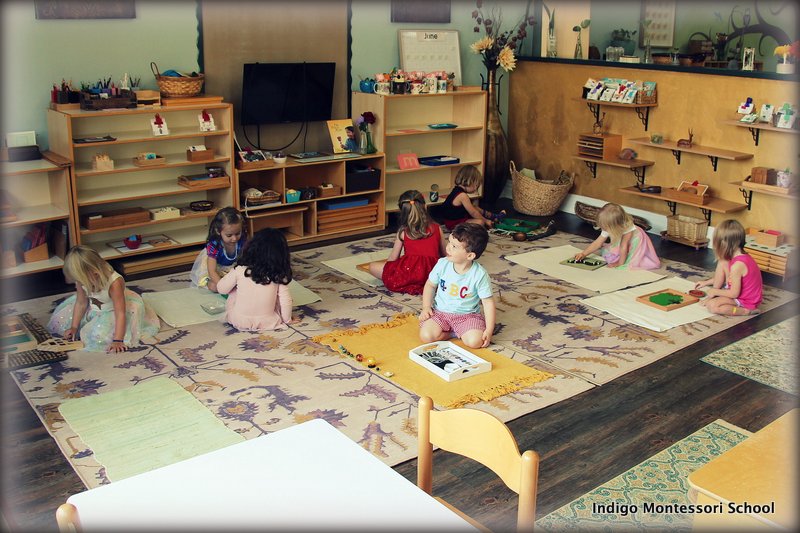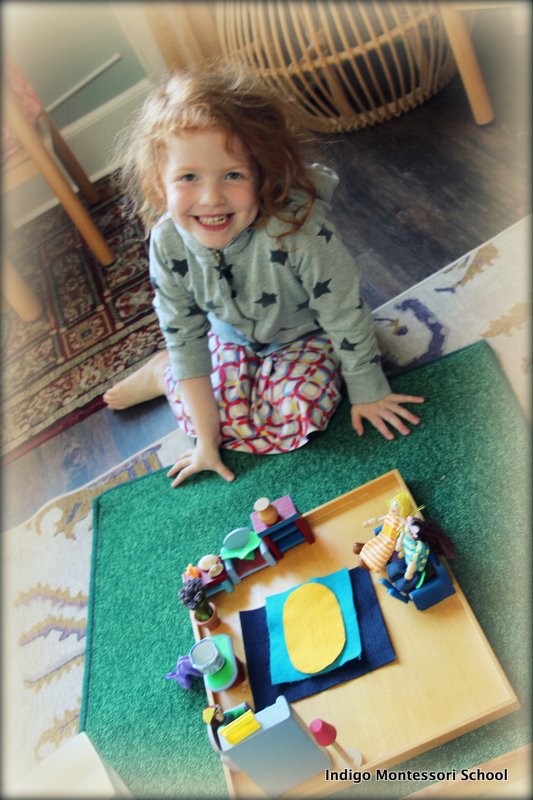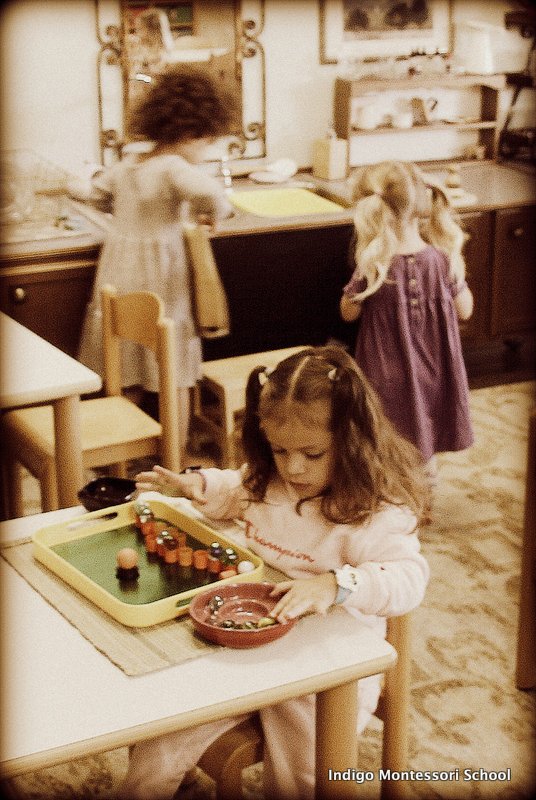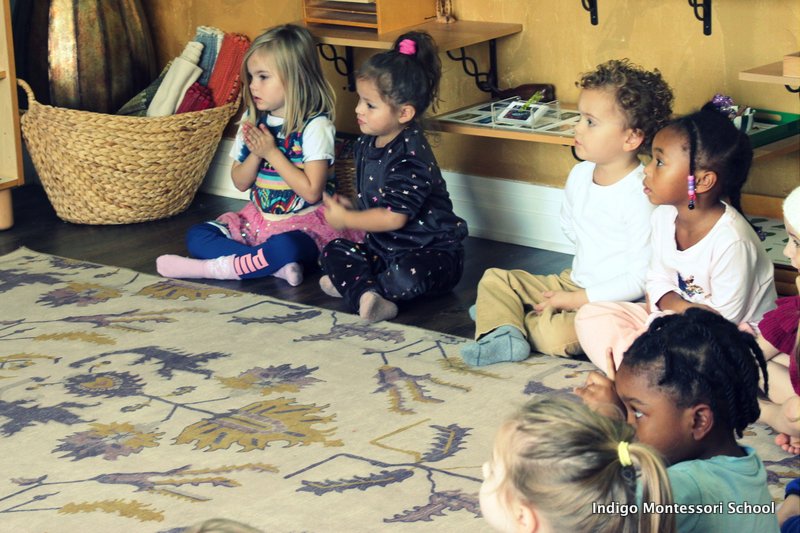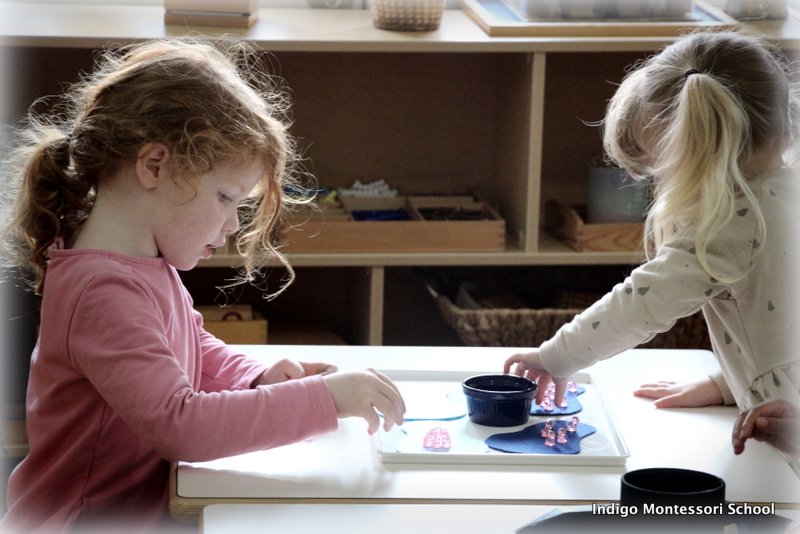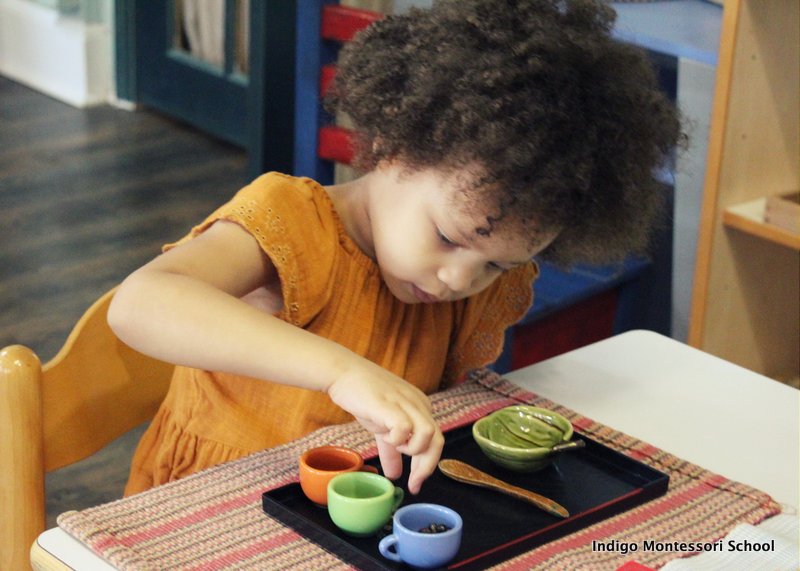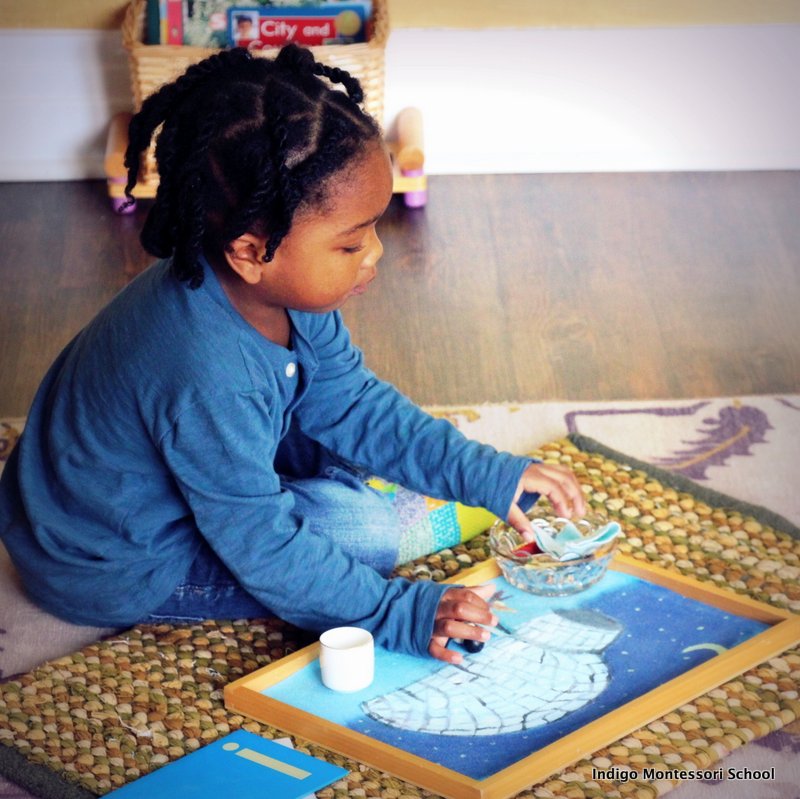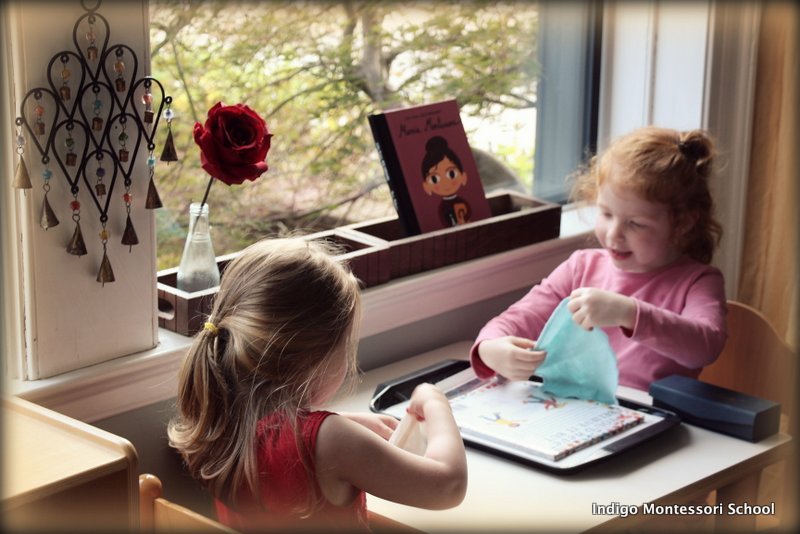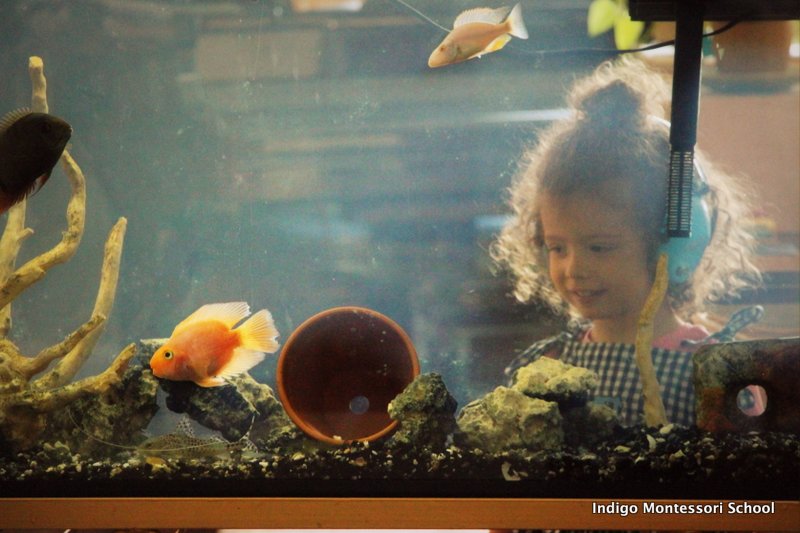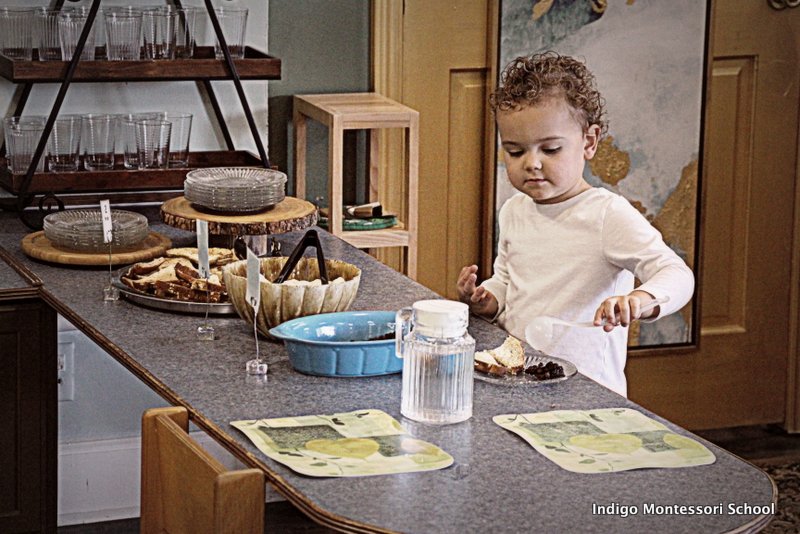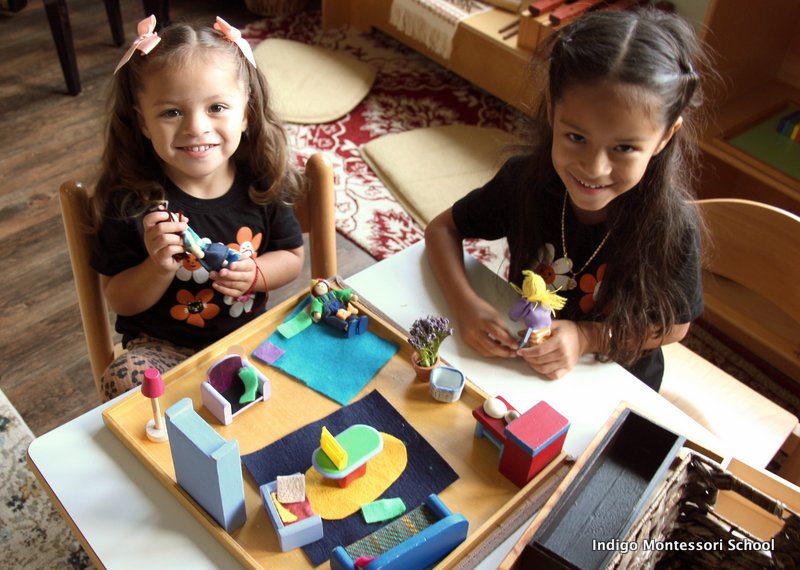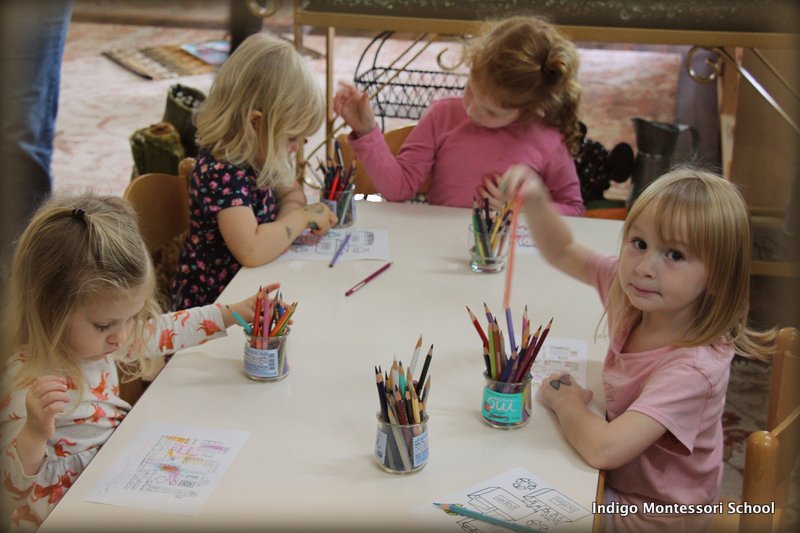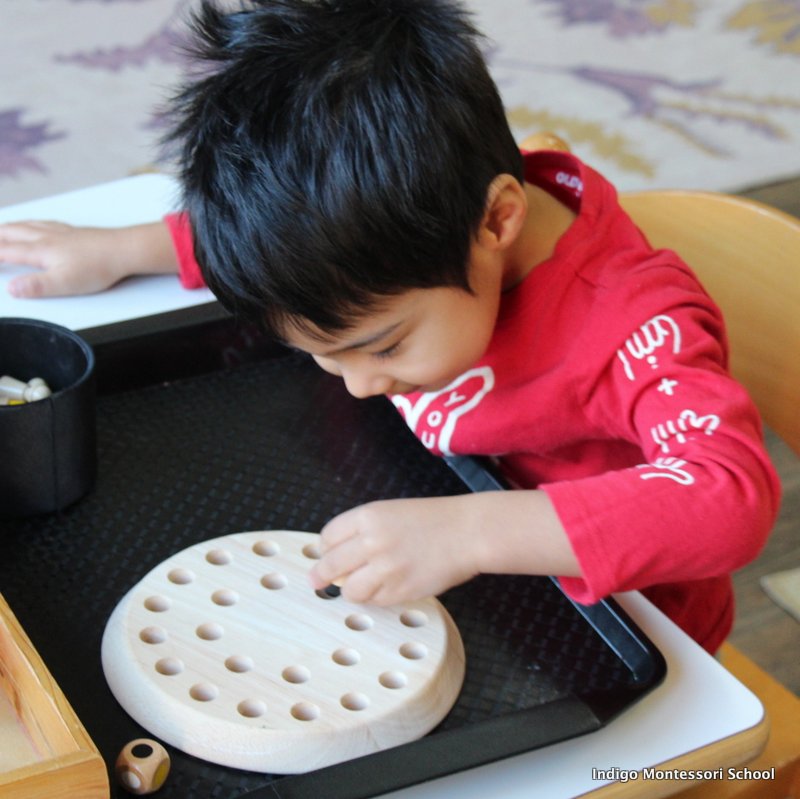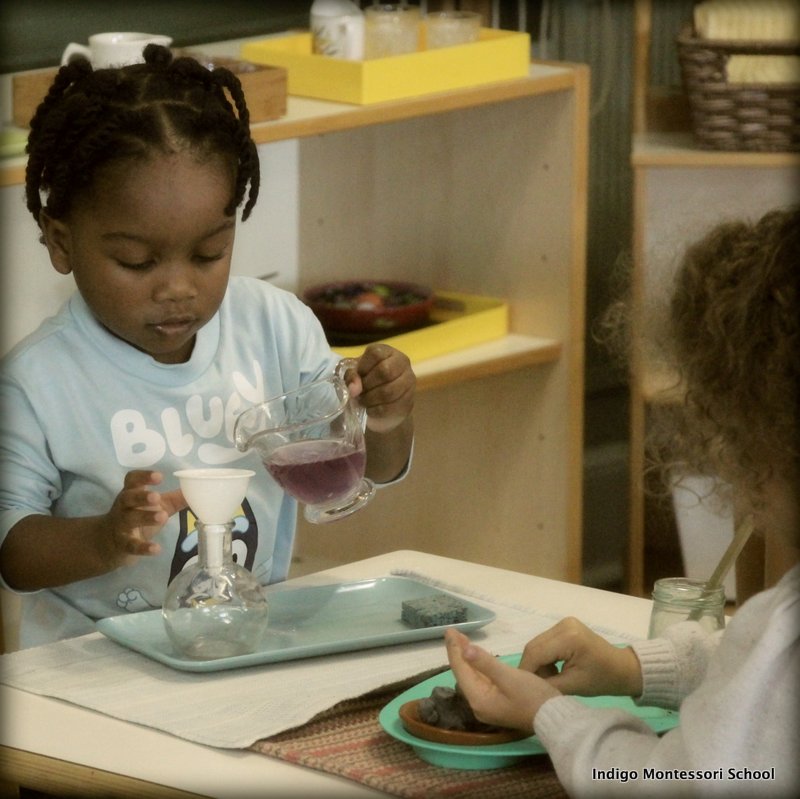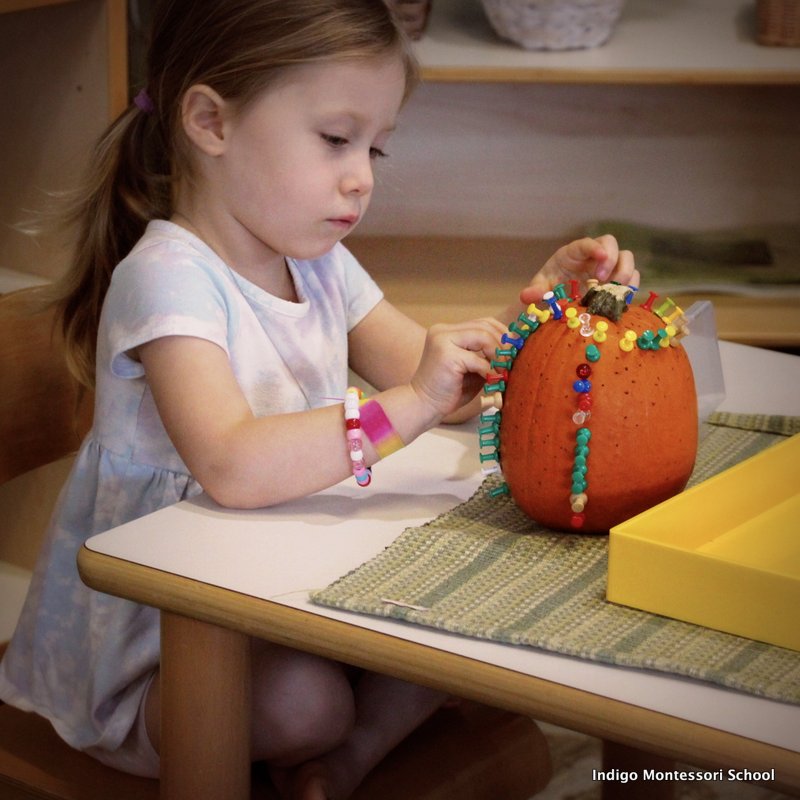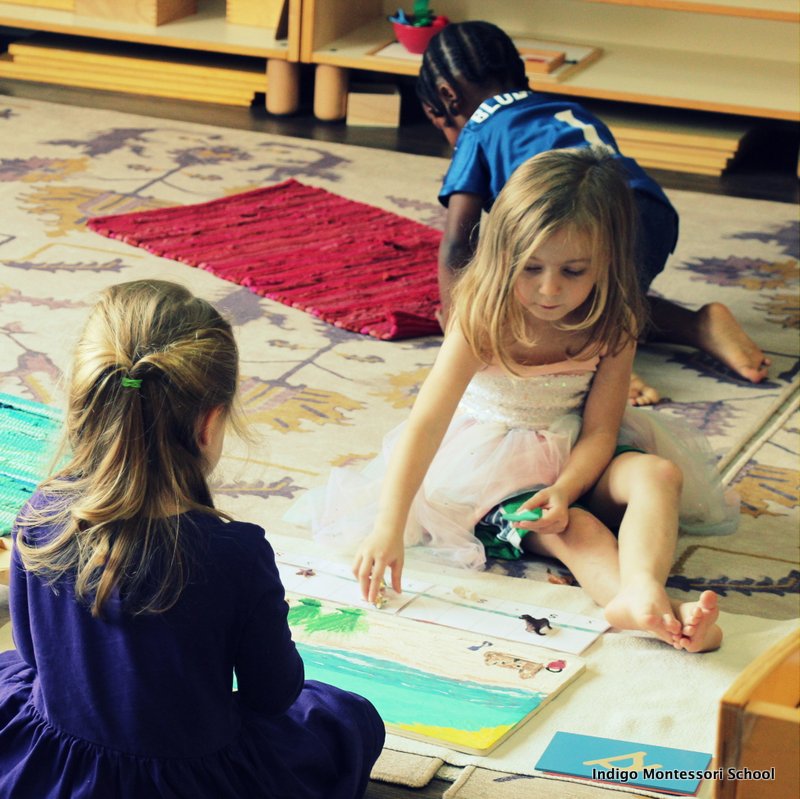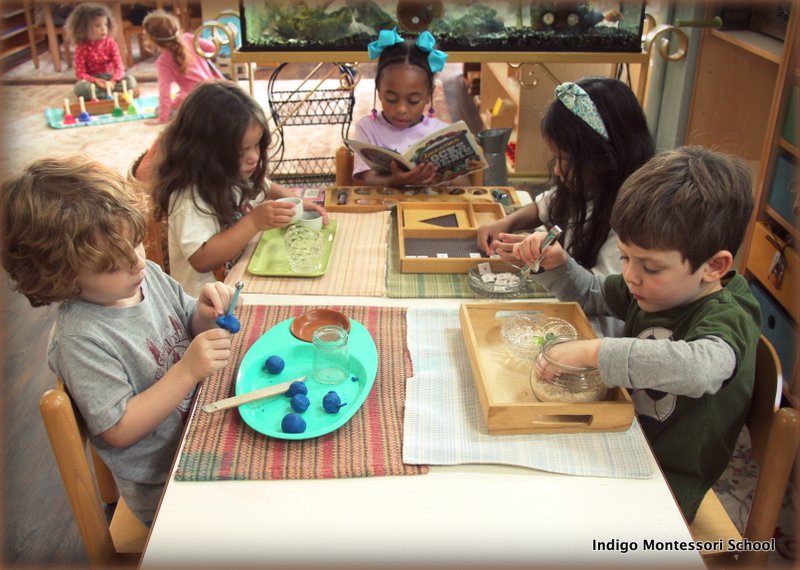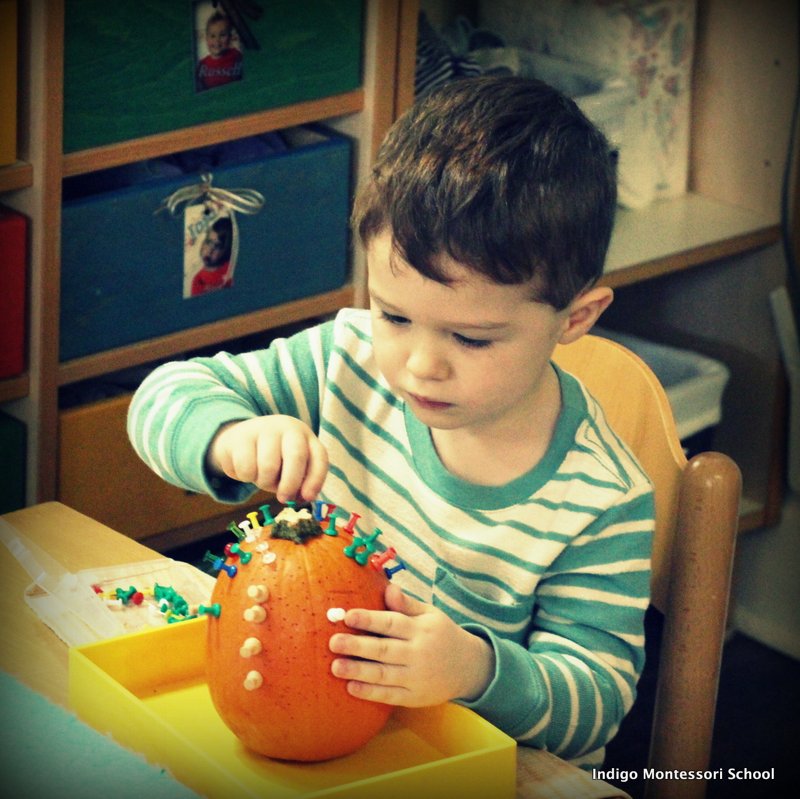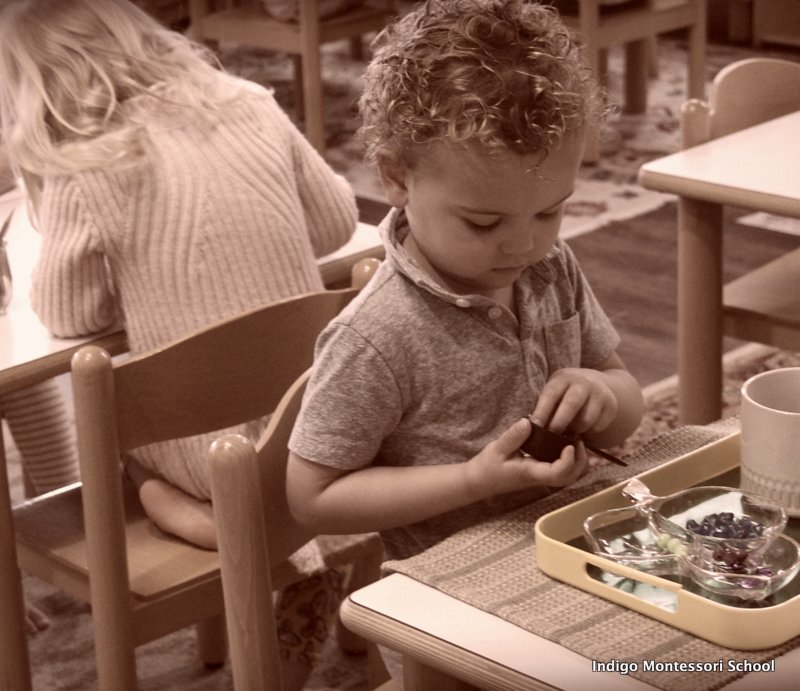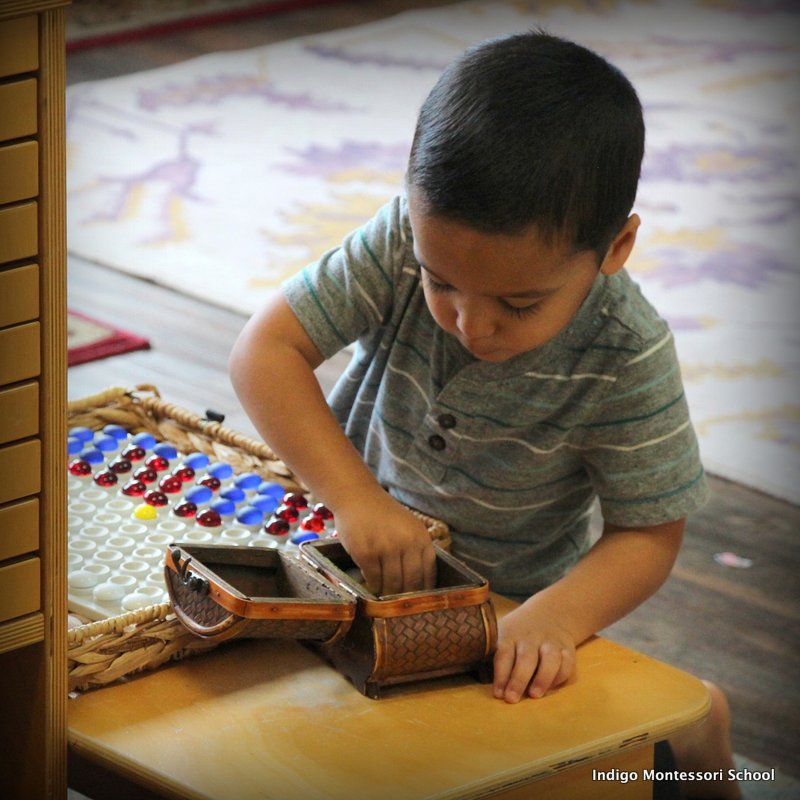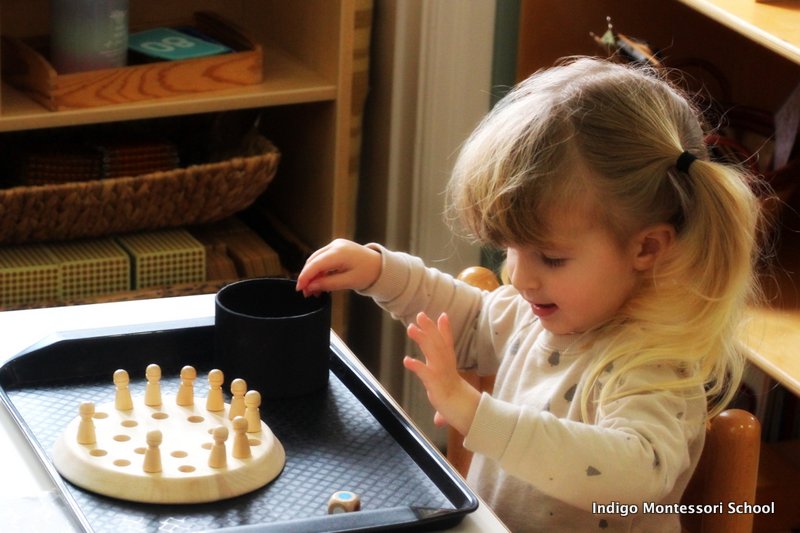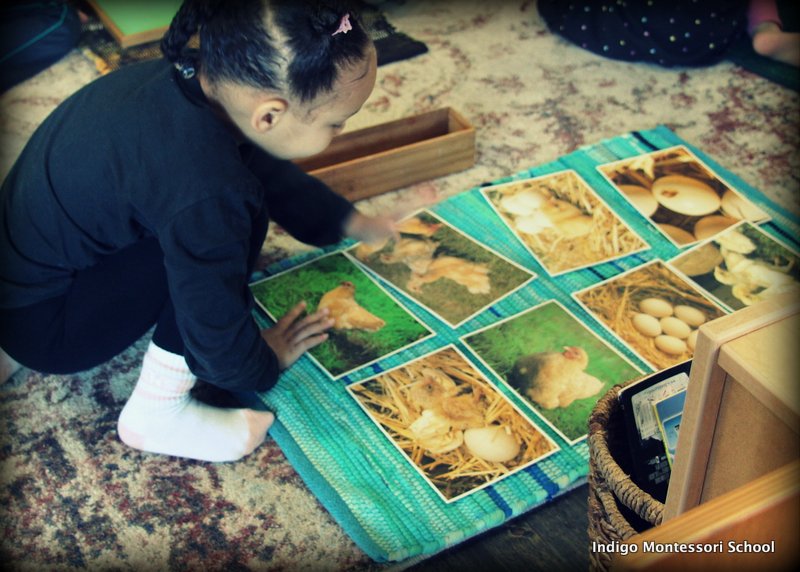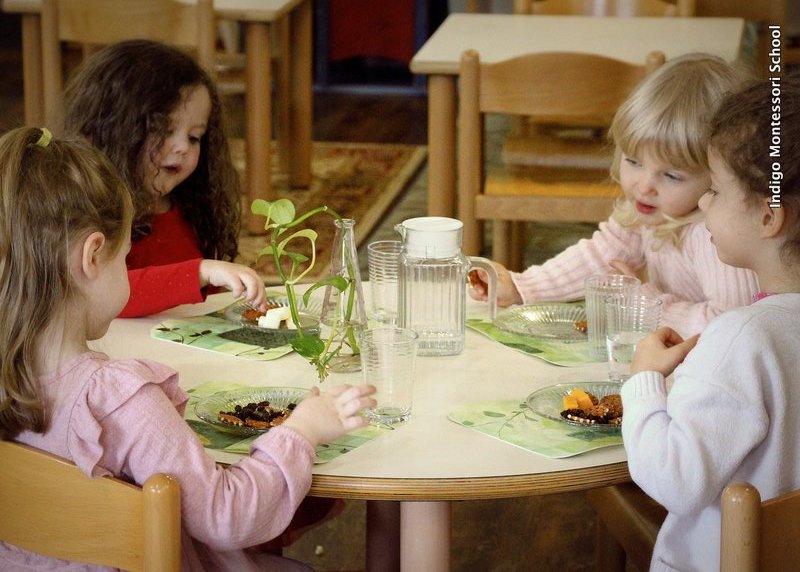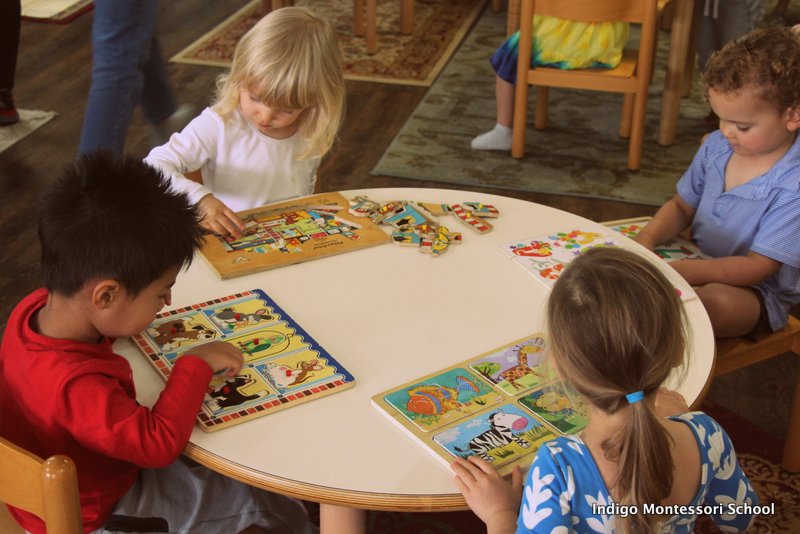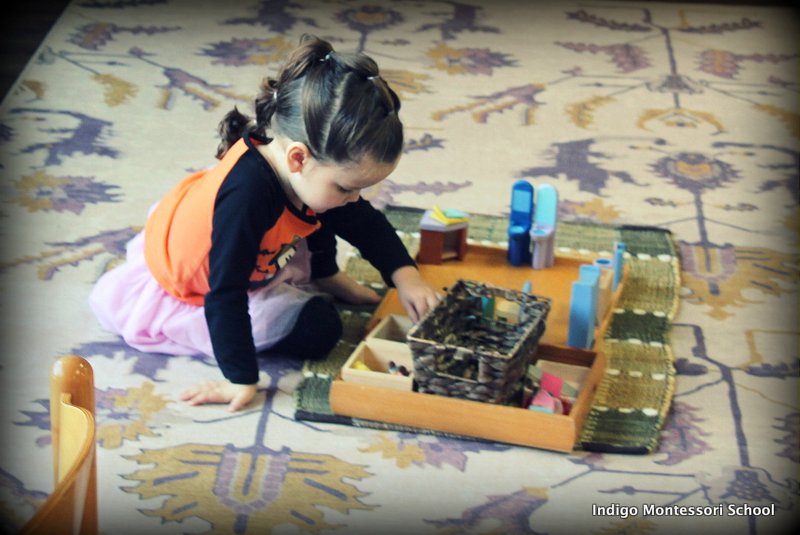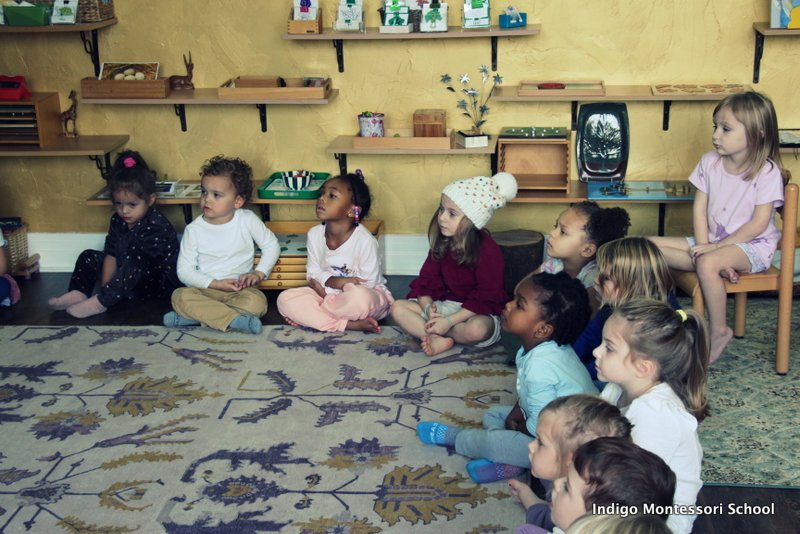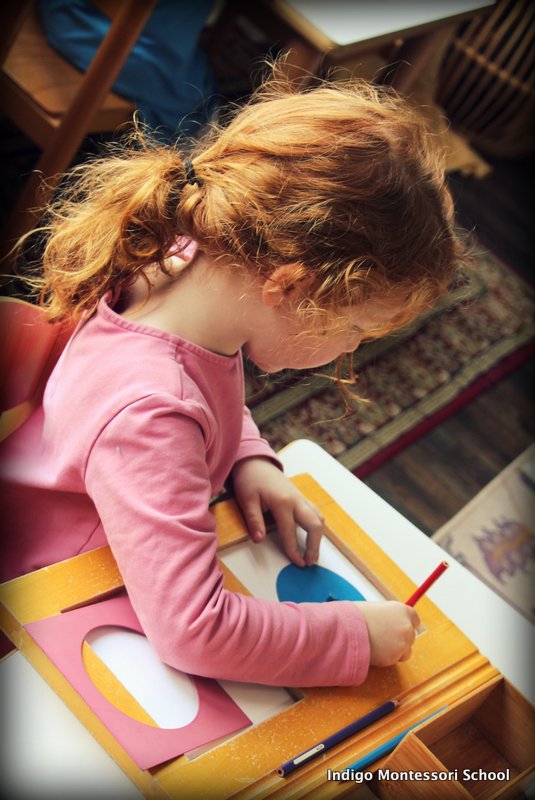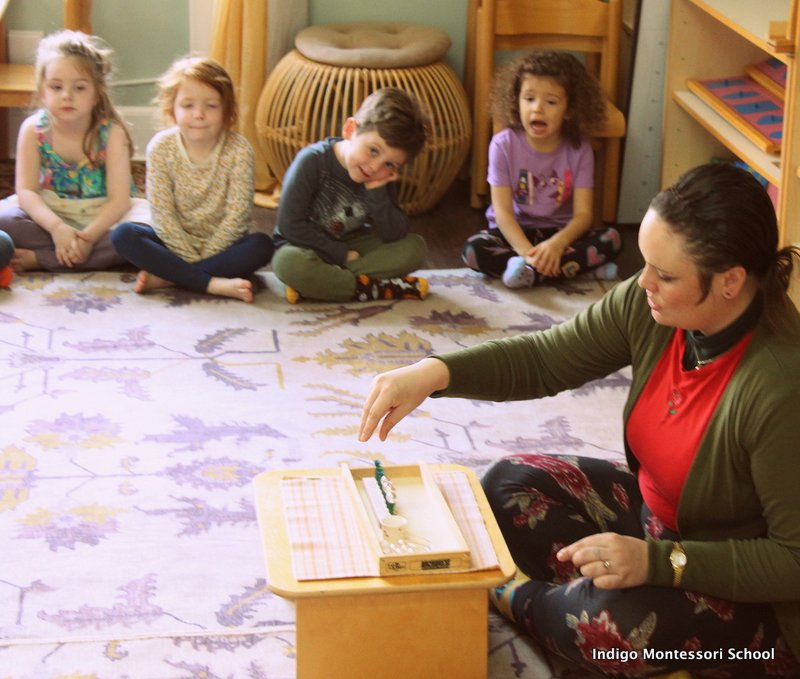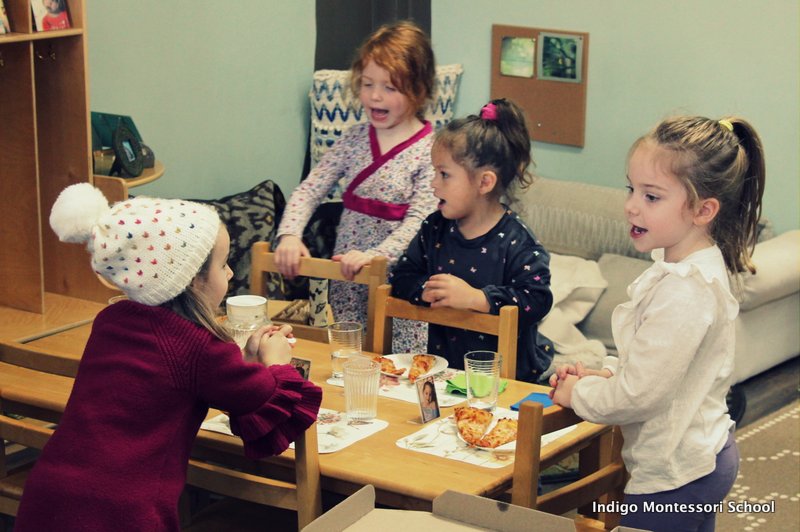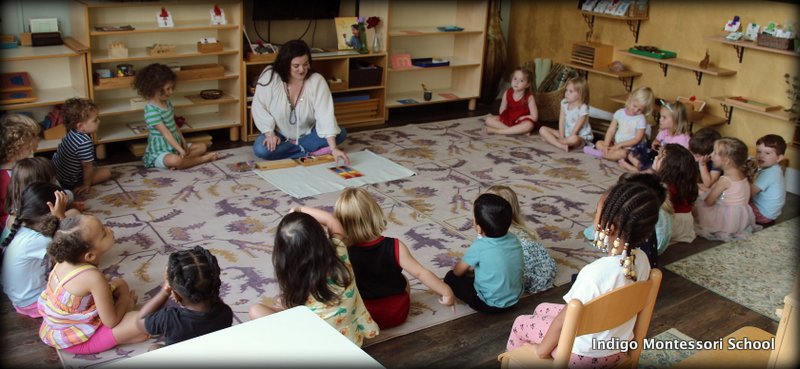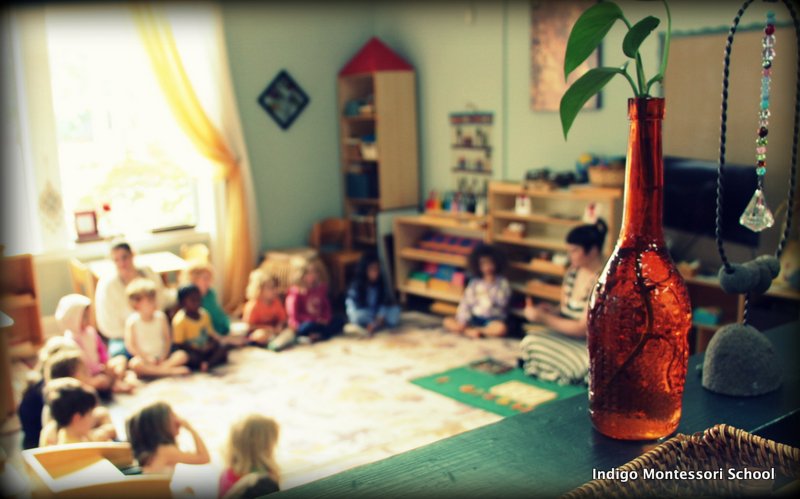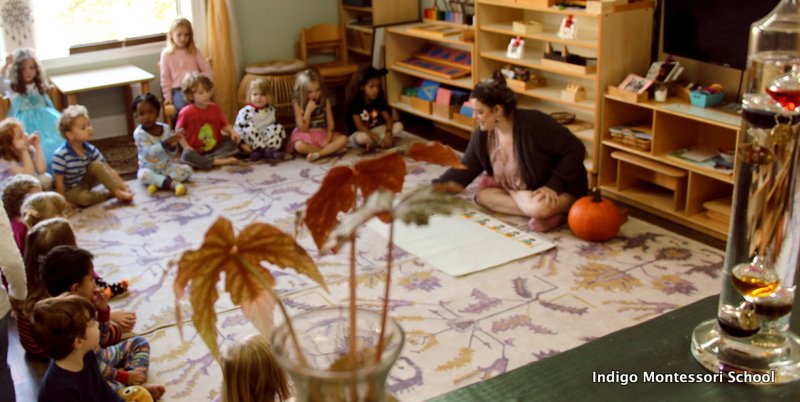
Dear Parents,
Now that you’ve had the opportunity to hear about your child’s progress, we hope you have a better picture of the activity and learning that takes place in our classroom. This is a wonderful time to reflect on your child’s milestones from the fall season and to gain an appreciation for the classroom’s collective growth and productivity. We’ll begin by reviewing each subject area in the classroom, concluding with our most recent topics for the holiday season. This includes lessons on grace and courtesy and how music beautifully ties into these themes. Last but not least, we hope you enjoy a variety of previous photos mixed with some recent ones of the classroom, found at the end of this post.
Practical Life Skills
In our Montessori environment, we focus on developing practical life skills that foster independence, concentration, and responsibility. Children work with a variety of utensils and intricate materials to build fine motor skills while learning to handle delicate items like glass and ceramics with care. Activities such as hammering, sewing, and pouring not only help children learn new skills but also strengthen their pincer grip, enhancing their coordination for writing and their ability to focus on tasks. These real-life activities encourage children to take pride in their accomplishments while building responsibility for their environment. As our students progress in this area, they especially love to get creative with the materials by organizing, making patterns, and creating designs. The preparation of these works is also an area where the teachers can get creative, so you can imagine the joy it brings to our faces to see our students engaged in handling our unique materials!
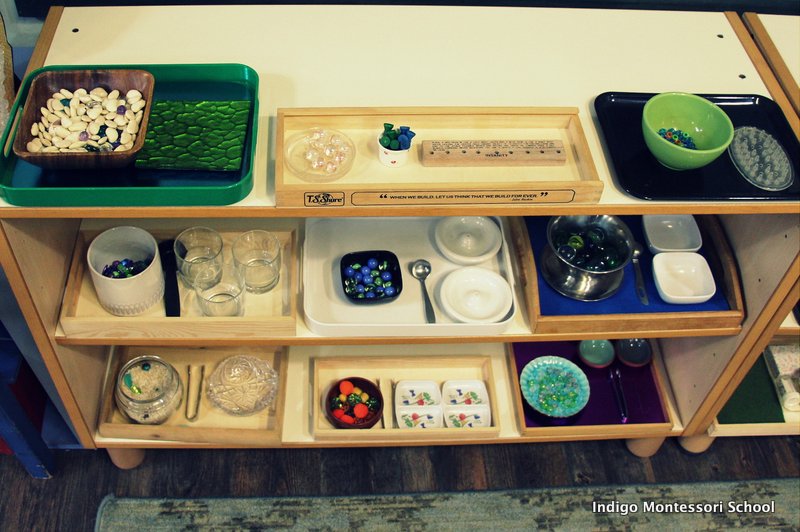

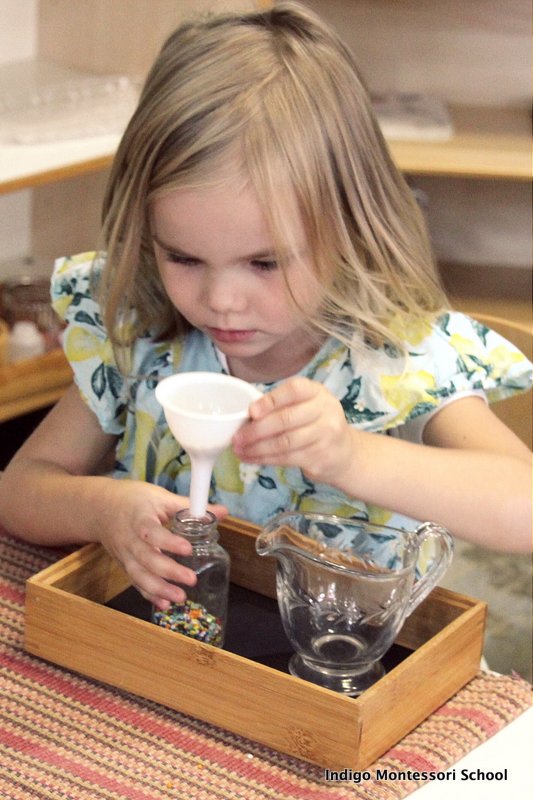

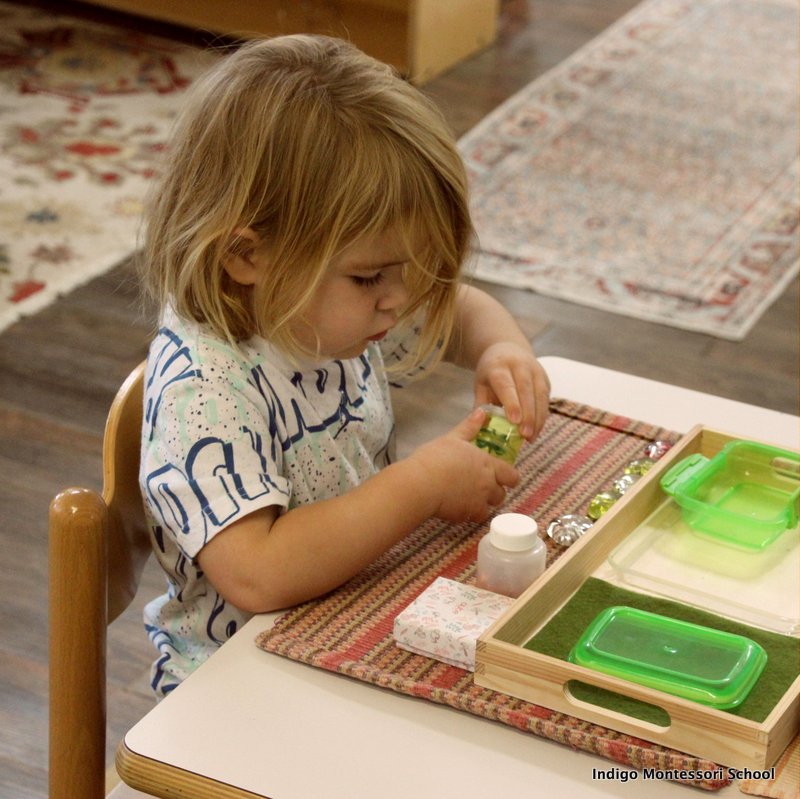
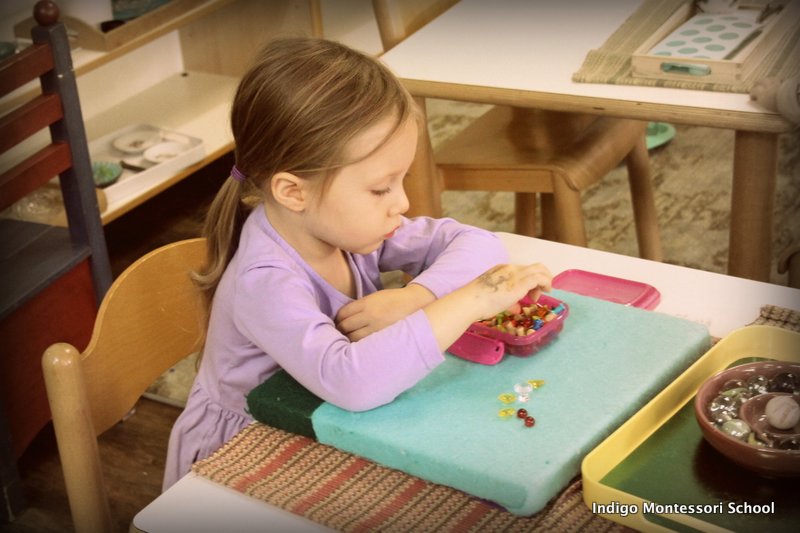




Sensorial Area
The Sensorial area engages children’s senses to refine attention to detail, develop problem-solving abilities, and strengthen fine motor skills. Using materials like geometric solids, knobbed cylinders, and puzzles, children explore dimensions, shapes, and textures while expanding their descriptive vocabulary, which they can apply in everyday interactions. Puzzles are a classroom favorite, as their repetition enhances spatial awareness, hand-eye coordination, and memory. They also introduce educational topics across various subject areas, including botany, zoology, and geography. This hands-on approach helps children connect ideas to the world around them through their senses, while they build descriptive vocabulary and critical thinking skills.

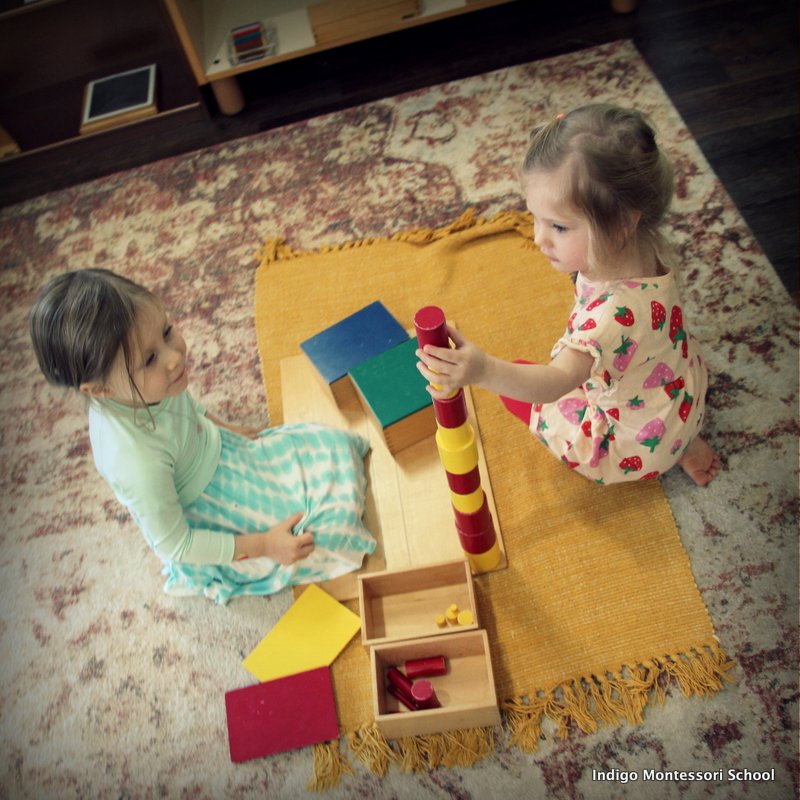

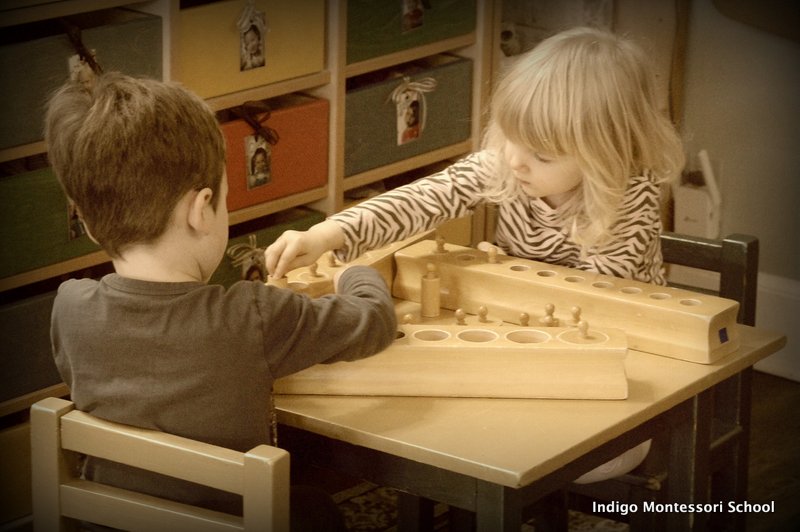

Math
In Montessori, math is an engaging, hands-on experience that focuses on connecting physical quantities with the printed digits. Using concrete materials like number rods, spindle boxes, and beads, children develop an understanding of quantity, sequence, and even simple equations. These colorful, purposeful materials make learning math enjoyable and encourage critical thinking and problem-solving skills. By working with materials they can touch and manipulate, children build a strong foundation for more complex math and develop a natural love for numbers.
Similar to our Practical Life area, something that sets us apart from other schools is incorporating artistic touches into our works. Many of us have artistic backgrounds, and when creating materials, we find fun ways to design colorful activities that allow children to get creative or tell a story. For example, we use translucent objects on hand-made number grid boards to create patterns, and we also come up with storytelling activities that explore simple math concepts and equations.
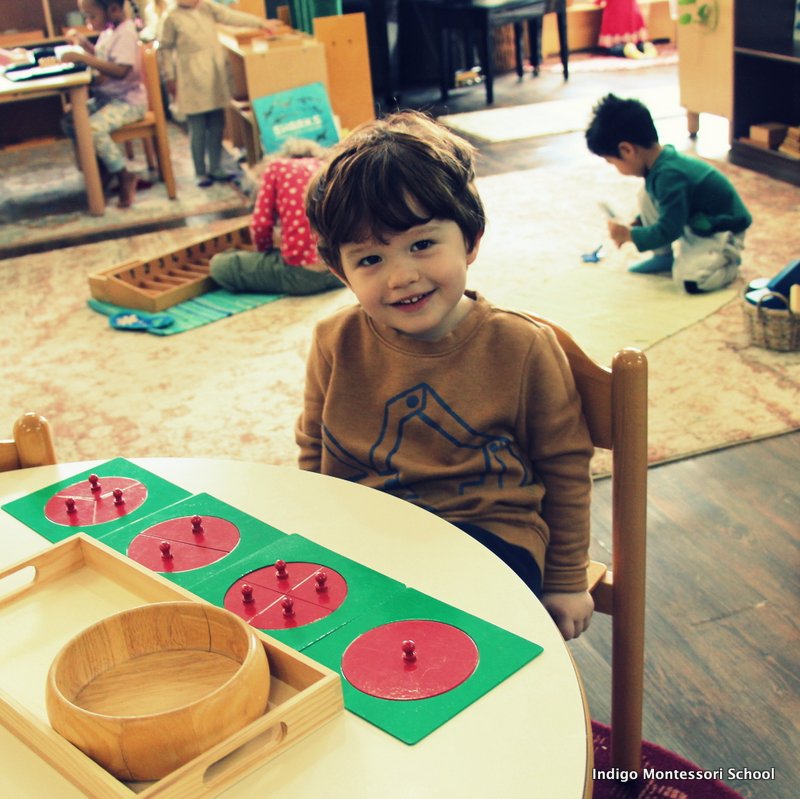
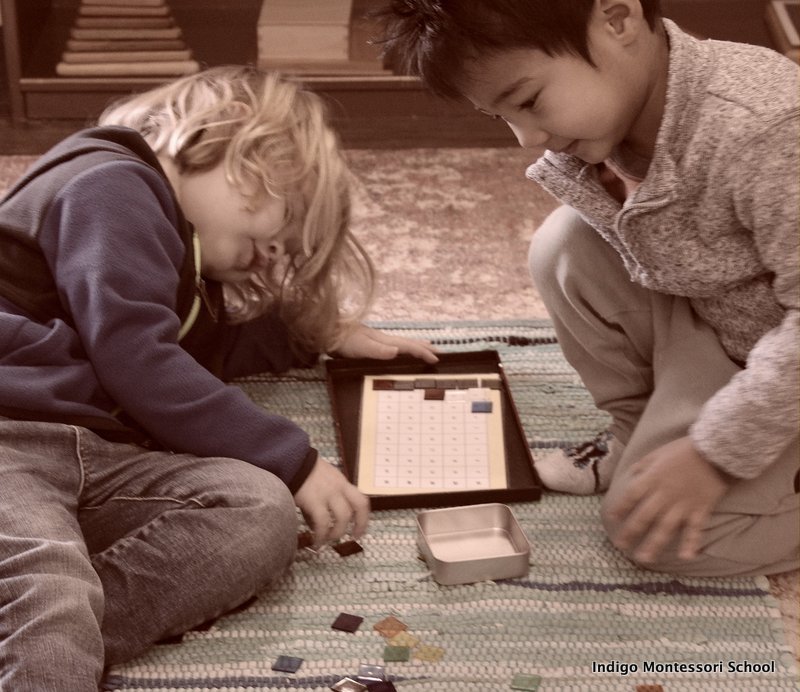


Language
Language development is an essential part of Montessori, blended into every subject area to encourage communication, vocabulary building, and pre-reading skills. Through materials like sandpaper letters, storytelling, and phonetic exercises, children gain awareness of letter sounds, strengthen their fine motor skills for writing, and express themselves creatively. Our curriculum emphasizes letter sounds over names and introduces lowercase letters first, as they appear more frequently in books and are easier for young children to recognize.
Note: Keep in mind that we are introducing these concepts at a very young age. While you might recall learning both the letter names and sounds simultaneously in kindergarten, introducing both at once can be overwhelming for younger children. We take it one step at a time, with patience, knowing there’s plenty of time to build on these skills as they grow, and naturally, we don’t want the child to feel rushed in this organic process.
We gradually progress to word-building and name recognition by introducing each concept one step at a time, keeping the process enjoyable and stress-free. Parents can support this at home by practicing sounds without correcting their children, as this helps them build confidence and enthusiasm for learning. If your child guesses a letter sound incorrectly, that’s perfectly fine—they are starting to connect that letters make sounds, which is an important step in their learning. If you are concerned, you can always come back to that letter sound moments later, and re-introduce it, asking them to repeat after you – so this way, they simply think they are practicing the sounds with you.
Language is a sensitive area where encouragement is vital, especially as we introduce these concepts at a young age. This includes storytelling—if your child is narrating a book, let them use their own words. Whether or not it matches the text, storytelling enhances their ability to communicate with narrative structure, building skills like emphasis, clarity, and tonality. Your child is actively learning lessons on sequencing terms, action verbs, tenses, and creating their own narratives through our “Beginning Sounds” storytelling works, among other activities.


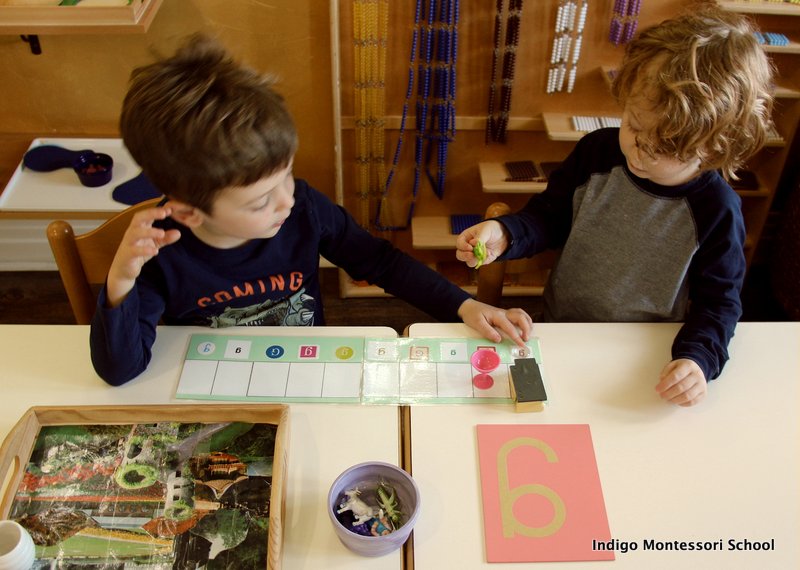
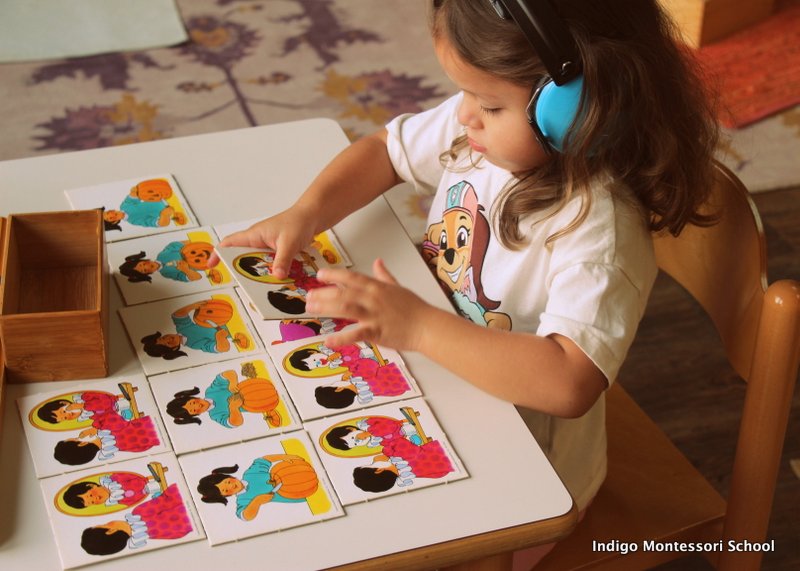
Sciences / Culture / Geography / Zoology / Botany
These subjects blend naturally in our classroom, encouraging children to explore and connect with the world around them. Through activities like animal and plant puzzles, continent maps, and science experiments, children develop a curiosity for nature, the solar system, and different cultures. These lessons build vocabulary, strengthen critical thinking, and nurture an appreciation for the world and its diversity. By emphasizing hands-on exploration, we inspire a love of discovery as children begin to understand and explore their role within the world.
And if you haven’t guessed it already, in addition to the classic Montessori materials found in this area, our teachers also create their own imaginative and engaging materials—just as we do in every subject area!
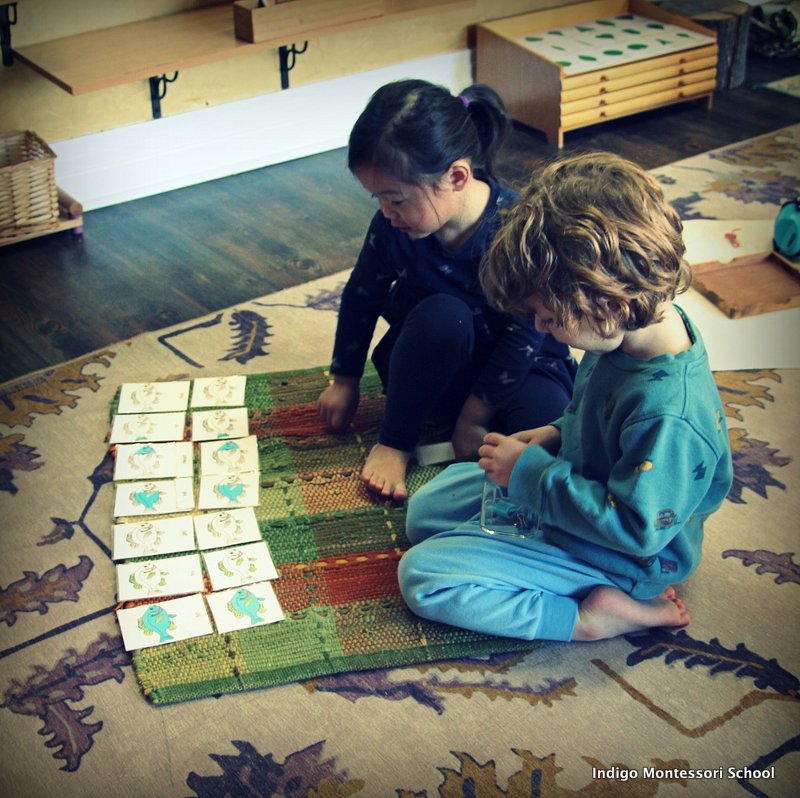
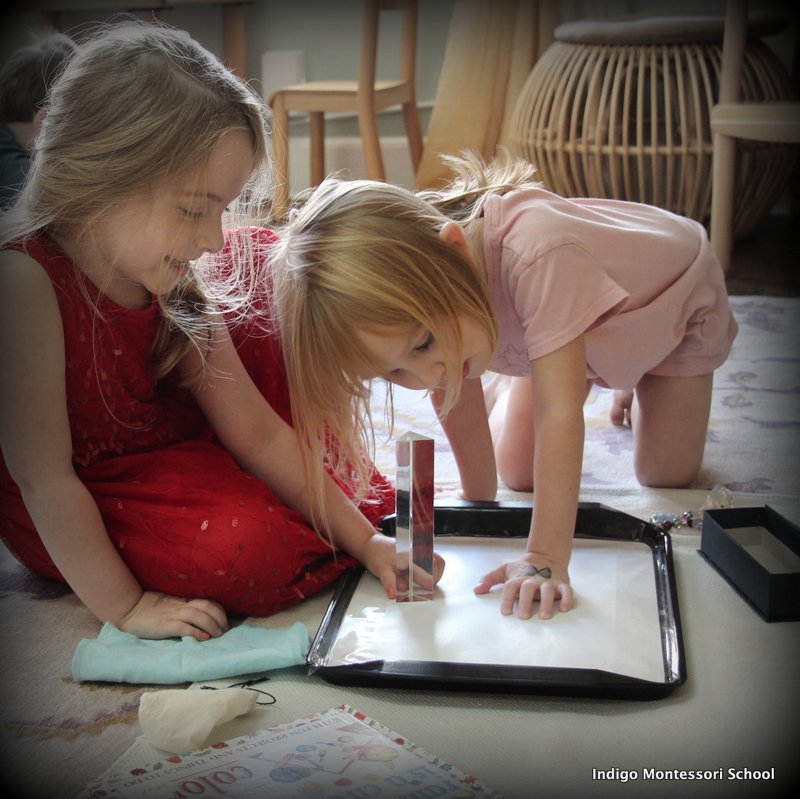
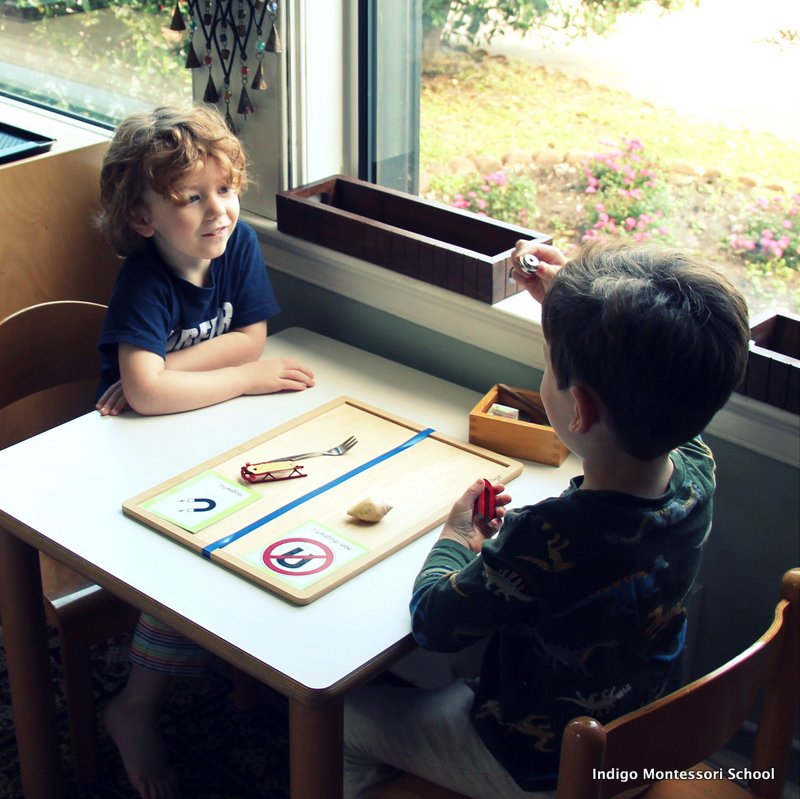

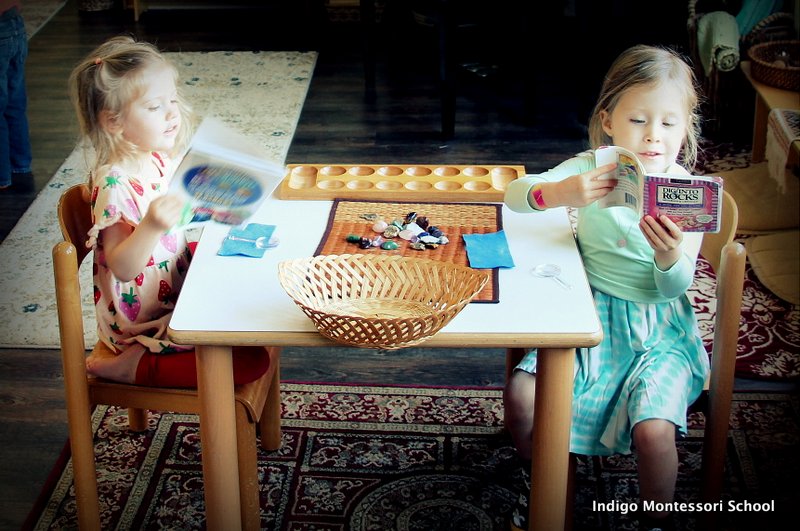


Personal Growth / Social & Emotional Development / Courtesy & Respect
We prioritize social and emotional development by equipping children with the tools to understand one another and express their own feelings. Through class discussions, role-playing, and carefully curated materials, children learn self-regulation and emotional vocabulary, building the foundation for empathy and respectful interactions. Individual meetings and small groups allow us to observe each child’s growth and provide tailored support as they develop essential social skills and a sense of community.
We also address everyday, age-appropriate conflicts and miscommunications, encouraging children to use their words to work through challenges, respect each other’s differences, find compromises, and reconnect with their friends to move forward together. You may have heard of our “peace rose,” a wonderful tool for reminding children to take turns listening to each other—whoever has the rose is the speaker, so all ears are on them!

At our school, personal growth, social-emotional development, and courtesy are key areas of focus. The following topics on Music and Grace & Courtesy are wonderful examples of how we integrate these values into everyday learning. Through creative activities and meaningful discussions, we aim to nurture empathy, kindness, and self-awareness in each child.
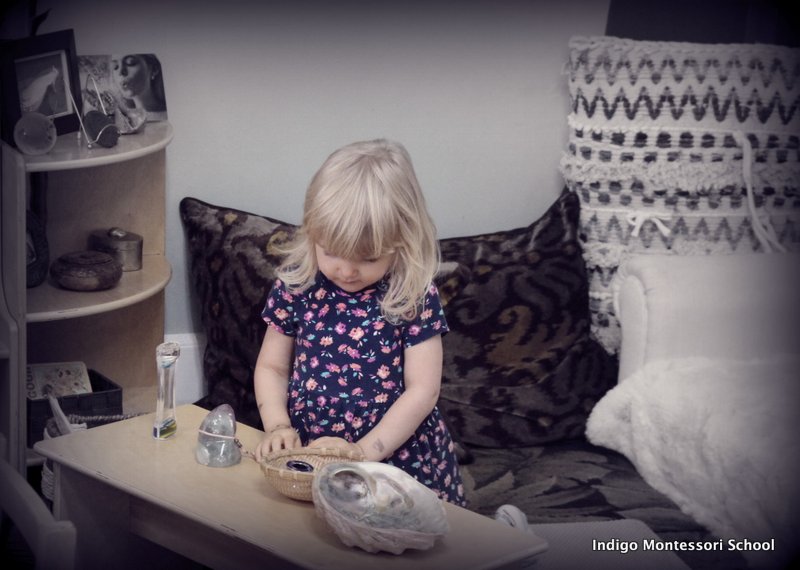



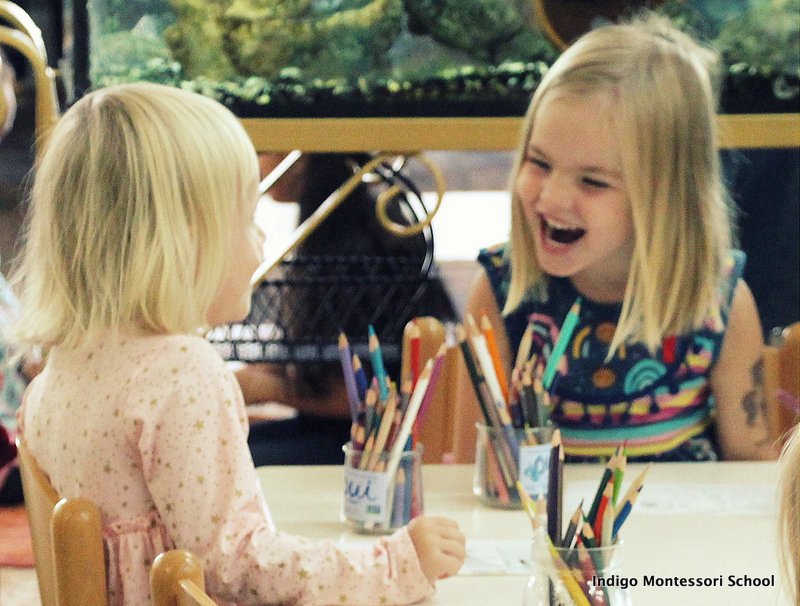

Music Lessons with Creativity and Purpose
Music is another area where we love to get creative. Ms. Caroline has introduced lessons on counts, beats, notes, sound changes (like crescendo), and the C scale. Most recently, the children have been learning about quarter notes and eighth notes, which tie in beautifully with our math introduction to fractions. Under her guidance, the children work together as a team to create harmonious rhythms, while also respectfully following her lead. They explore peaceful percussion instruments in our Music area, learning not only the technicalities of music but also the joy of collaboration and shared creativity.

Ms. Angelique brings storytelling into classic songs, helping children connect with the lyrics in a meaningful way. For instance, we might take a romantic song and turn the focus to relatable stories about friendship, self-regulation, or self-love. An example of this was the other day when we learned a few lines from Frank Sinatra’s “Blue Moon,” using it as an opportunity to reflect on finding peace through nature, such as looking to the moon, the ocean, or a sunset. These moments teach children that while they might feel lonely at times, they are never truly alone—family is always nearby, and someone is always in their heart—and that loving themselves is just as important as feeling loved by others.

By breaking down lyrics like a story, offering relatable examples, and guiding children to make the songs their own, we help them build a deeper connection to music while finding purpose and meaning when singing along.
Holiday Lessons Around Grace & Courtesy
As the holiday season approaches, we focus on instilling the values of gratitude, kindness, and empathy in our children. It’s a time to reflect on all that we have—such as a safe and warm home, caring families, nutritious food, and a welcoming school community.
In our classroom, we gently introduce the idea that not everyone has the same opportunities or comforts. Through age-appropriate discussions, we touch on topics like poverty and homelessness, always framing these conversations with hope and the potential for positive change.
We share stories about people and organizations making a difference, such as UNICEF, local shelters, and famous philanthropists, including Audrey Hepburn’s inspiring contributions to UNICEF. These stories are meant to plant seeds of kindness and compassion, helping children understand the importance of helping others in need.
During our discussions, our students also reflected on their own gratitude, eagerly sharing countless reasons for what they are thankful for. Together, we explored ways they can show kindness during this season—whether by helping out more at home, expressing thanks to family members, or performing small acts of generosity. In fact, the time often runs over as so many hands shoot up with more to say, prompting us to eventually wrap up the discussion to move on to the next activity. We encourage everyone to continue the conversation in small groups or during lunch time. That being said, don’t hesitate to discuss the following slide, as your child might still have some thoughts to share!
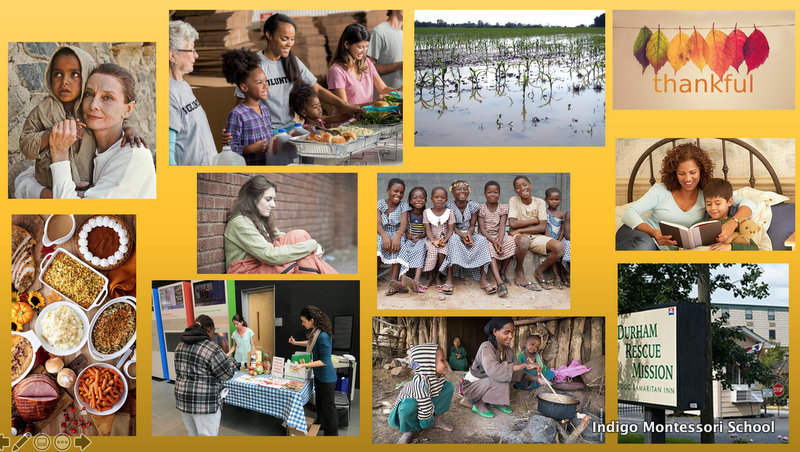
We hope these lessons inspire your children to bring the spirit of kindness and gratitude into your homes this holiday season.
Classroom Fall Activity
Now, as promised, here is a collection of photos showcasing the children engaged in a variety of subject areas, staying busy and productive in the classroom. Take some time to scroll through these moments and enjoy seeing what everyone has been up to. Your children can share more about the works they’ve been using and lessons they’ve learned, so be sure to explore these photos with them. It’s a lot to go through, so consider sharing in sections and coming back from time to time as a way to encourage your child to reflect on their days at Indigo.
We are thankful for your support, and we wish you a warm and cozy Thanksgiving filled with precious moments. Enjoy!
